|
As many of you know, I had two foals born this year. It has been about 6 years since I raised foals and Stoli (paint) and Whisky (palomino) are the 10th and 11th foals I have raised in my lifetime. Over the years I have used different weaning methods, ranging from "cold turkey" weaning to natural weaning. Now that Stoli is 6 months old and Whisky is 5 months old, I am often asked when I plan to wean them. Most breeders wean their foals between 4-8 months of age. In this blog I would like to share my view on the best way to wean a foal. Most Common Weaning PracticesMost breeders that I know practice what I would call "cold turkey" weaning. This is where the foal is abruptly separated from the mare (preferably where they can not see each other). Many times the foal is either turned out with other foals and/or a "baby sitter" horse. The baby sitter horse is normally an older mare or gelding who gets along well with young horses. The foal usually cries out for it's mom and paces the fence until it eventually (can last hours to days) settles down and seeks companionship from the other horse(s). If the mare and foal can hear each other's cries, this will usually prolong the process. While this can be a very stressful way to wean, it can be warranted at times. Some circumstances that would support abrupt weaning are medical reasons and necessary sale of the foal and/or mare. However, it is important to note that in addition to it being emotionally stressful on the horses, it also can have physical implications. The potential risk to the mare and foal is higher due to them possibly trying to escape to find each other and also the likelihood of frantic running along the fence line. Additional, you need to consider the risk of GI ulcers during this high stress time. The mare will also experience discomfort as her udder enlarges due to the foal no longer nursing. The period of time it takes to dry up will vary from mare to mare. Some mares will dry up in days while others can take months. Gradual WeaningUnlike "cold turkey" or abrupt weaning, gradual weaning takes place over a longer period of time. With this method of weaning, you can begin to separate the mare and foal for short sessions and then re-unite them. As they become comfortable with the short separations, you can then increase them until eventually you separate them permanently. This method of weaning is far less stressful for both the mare and foal and decreases the likelihood of separation anxiety. The longer you take to complete this process, the less emotionally traumatic it will be. Natural WeaningIn the wild, the mare will naturally wean her foal by nipping at them when they attempt to nurse. The mare usually begins the process of natural weaning when the foal is about 10-11 months old in anticipation of her new foal being born (the foal will be 11-13 months old when their sibling is born). This is my preferred method of weaning. Along with being the least stressful method of weaning, it also allows the foal to benefit from learning socialization skills from their mother and other horses. I believe that is essential to the foal's mental development to have them turned out with other horses. I try to always breed two mares together so that the foals can interact with each other and the additional mare. I also introduce my other horses (geldings) into the herd once the foals are old enough so that they can learn from them as well. In my opinion, the more horses a foal is around, the more mentally stable they will be as adults. I'm not a fan of keeping young horses together without older horses as role models. I also like the idea of the foals being able to benefit from the nutrients they receive from their mother's milk for a longer period of time. I believe this will make them physically and immunologically stronger. That being said, natural weaning will not work in every situation. Sometimes stud colts will become too "stud-y" when left with their mom and other mares for that long. Other times the mare may not be able to physically handle the caloric requirements necessary to lactate and be pregnant at the same time. In these cases gradual weaning would be recommended. Stoli and WhiskyWith Stoli and Whisky (who are both fillies), I plan to do natural weaning with them. Their mothers are not pregnant again (I personally do not like to breed-back mares....I prefer to give them at least a year off in between pregnancies) and they are both in good condition. There is no reason for me to rush the weaning process. I will allow the mares to begin weaning them as they see fit. In the meantime, the foals are handled daily and are being exposed to different environments. They have stalls that they go in when the weather is bad and they have learned that just because they are separated from each other, it doesn't mean that it is permanent. They always see each other again. This takes a lot of the stress out of separation (not just separation from the mares, but separation from their other horse friends). They have been exposed to other horses and I move my geldings in and out of the pasture so they can become used to not always seeing them. We also ride the mares with the foals following along. We plan to do more of this during the winter when the weather cools off here in Florida. Whisky had an injury recently which required her to be in the hospital for a week. The silver lining to this was that she gained a lot of experience with the horse trailer, being handled by other people and being away from mom (for short periods) and away from the other horses (for 2 weeks). I plan to keep both Stoli and Whisky so they will remain with their moms until they go off for training as 3 year olds. My goal is for them to be completely independent and emotionally well rounded horses by that time. If you do not have the time or ability to work with your foal during the natural weaning process, I would recommend following gradual weaning instead. Foals that are too attached to their mom and companions will be more difficult to train and could potentially end up in bad situations. I like to know that if something were to ever happen to me, my horses would be productive members of society and have the best chance at a happy life.
2 Comments
Becoming an Angel's Animals affiliate is a great way to earn extra money and help more animals through the spread of knowledge! Here are some helpful tips to help you find referrals. What is our Affiliate Program?Our affiliate program is available to anyone who wants to promote our courses. You do not have to be one of our practitioners or students to join our affiliate program, but it is helpful if you have personal experience with our courses when promoting our courses to others. Our affiliate program starts you off with a 10% commission for each enrollment. There are bonuses and percentage increases as your referral count grows, making this an excellent source of extra income. If you would like to become an affiliate email Dr. Angel now. How To Gain Referrals?Once you become an affiliate, you will be provided with specific links that you can share with others. These links will have your affiliate code so that we can track your referrals.
Join our Angel's Animals Affiliates FB page to receive notifications of sales and more helpful tips!A common question that I get from both students and clients is if massage and other forms of bodywork are safe for pregnant mares and foals. The basic answer is yes. I will explain in this article the types of bodywork mares and foals can benefit from. The Pregnant MareMassage Therapy is extremely beneficial for pregnant mares to help reduce muscle soreness due to compensated movement from the growing fetus. Many mares will begin to develop edema (swelling) under their belly and their legs towards the end of the pregnancy and massage can help mobilize that fluid and decrease the discomfort associated with it. There are some schools of thought that massage and cause pre-mature labor by unintentional stimulation of acupuncture points that are known to be associated with stimulating labor. I have not found this to be the case. I have been working on pregnant mares (both my own and clients) for the past 10+ years and have never had any issues. I do recommend avoiding the abdomen during the massage session (stay away from the fetus) and when in doubt, check with the horse's veterinarian first! Body alignment is another very import modality that pregnant mares can benefit from. If the lower back, pelvis or sacrum are out of alignment, there is potential for a difficult birth. Ensuring that the mare is aligned will greatly aid in her ability to pass the foal through the birthing canal. The images below are of Shea's recent birth. She was aligned using ANMR technique through her pregnancy and the morning before she foaled. Kinesiology tape has been used on pregnant women for many years to help decrease back pain and add support due to the increased stress from the weight of the fetus. Mares can benefit from tape as well. The back pain support taping can be used to support the paraspinal muscles. When Should You Refrain From Working on a Pregnant Mare?Contraindications would include any underlying health issues, such as infection (placentitis), inflammatory conditions or any other health issue that would be a contraindication for massage in general. It is always best to consult with the mare's veterinarian before working on a pregnant mare. FoalsIt is never too soon to start massaging foals and introducing them to bodywork. This is a great time in their lives to get them used to having your hands on them and utilizing other tools such as mechanical massage tools, body alignment tools, red light pads, etc. Massage and bodywork will allow them to maintain proper function and range of motion as they grow and will also prepare them mentally to be handled as adults. I always perform ANMR technique on my foals to ensure that they are in alignment after labor and also to get them used to the tool. Below is a video of Stoli, receiving her first ANMR session at 10 days old. They normally are standing during the session, but she was so relaxed that she slept through most of it! 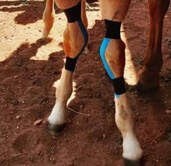 Kinesiology tape has been shown to be very beneficial for foals who are suffering from angular limb deformities. Take Home MessageYes, pregnant mares, mares who have recently foaled and foals can all greatly benefit from massage and bodywork. I recommend utilizing someone who is trained in Equine Massage and Bodywork.
Want to become trained yourself or add new techniques to your practice? Check out our courses Performed and written by Shawn Klahr Case History: 6 year old QH mare used for driving presents with a limp and right front leg turned inward. Owner suspected that she slipped on ice. Owner opted to not consult with a veterinarian. Findings: Palpation revealed swelling and pain at the right suspensory ligament and deep digital flexor tendon. Hypertonic muscles were also found in the neck, chest, shoulders and front legs. Treatment: Full body massage was performed, focusing on the tight areas found during palpation. Kinesiology tape was then applied to support the leg. Shawn's tape application: "I carefully cleaned the horse up, removing as much dirt and shedding fur as possible. Being that this horse would be out in the elements and in the mud, after a regular cleaning with a brush, I then used baby powder on the area that I needed to tape. I rubbed the powder in so it could soak up any moisture that may be there. After a few minutes, I then brushed away all the powder followed by wiping the area clean with a microfiber towel to ensure that the tape would adhere for as long as possible. Once the horse was prepped for taping, I began to apply the tape treatment. Since I suspect that the suspensory ligament is also affected, I made sure the “I” tapes were cut a little longer so that they could overlap under the fetlock applying both ends to the wall of the hoof. I supported the fetlock with 50-75% stretch, with the middle of the tape at the center of the fetlock; I applied with a slight upward and forward angle . Then I applied a second support tape with less stretch, at a minimal angle. Using two “I” tapes, I applied the first one as follows: first 2 inches with no stretch starting just below the carpal joint on the lateral side of the right front leg and behind the cannon bone. Then applied the tape up to the last 2 inches with 50% stretch from top to bottom along the deep digital flexor tendon. Then the last 2 inches were applied with no stretch below the fetlock. I then applied the second “I” tape in the exact same way but on the medial side of the left so that the inside and the outside both looked identical. To secure the application I used two anchors. The first was applied with no stretch all the way around the leg at the carpal joint and the second was applied around the fetlock. *Above you will see the tape application used. This particular application was performed on a different horse to demonstrate for this case study. Follow up:
This process was repeated 3x a week for 6 weeks due to the horse being on 24/7 turnout (tape did not last as long). Horse was massaged each time prior to taping. By the end of the 6 weeks, her leg was straight again and she was walking normal. Owner recommendations: The owner wanted to take her on a wagon train 5 months after her treatments ended. I strongly urged him to not go as I felt she needed more time to heal, but if he felt that he needed to, he would need to use medicine boots on her front legs and take breaks to allow her to rest and he would need to massage her leg at each break. With the growing threat of Coronavirus (COVID-19) across the world, it is important for our students and practitioners to do everything they can to keep themselves and their families healthy. In this article, I will discuss the risk associated with your animal massage business, ways to decrease exposure and how to boost your immune system. What is the Risk Associated with Working with Animals?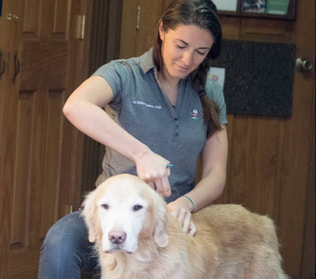 The risk is low. At this time, there is no evidence that animals can become carriers of COVID-19. Therefore the social isolation protocols that are being implemented for people, do not apply to animals. It is safe to touch, handle and work on animals. The biggest concern will be limiting contact with the animal's owners. I suggest recommending that clients drop off their animals with you and pick them up when the session is completed or later in the day (with equine clients, just maintain a 6-10 ft distance from the owner). Since the virus remains viable on surfaces (could possibly include massage tools, leashes, dog bowls, etc), it is important to sanitize everything after each use and wash your hands thoroughly. Obviously if an owner or practitioner has symptoms of COVID-19 or has been diagnosed with the virus, you should discontinue all contact. Sanitizing equipment and implementation of distancing yourself from the animal's owners will allow you to safely continue your animal bodywork practice. How to Minimize Exposure
Since most gatherings, including clinics, seminars and workshops are canceled, consider furthering your education through online educational courses during this time. Boost Your Immune SystemMany of our practitioners utilize modalities on their animal patients that can be used on themselves during this time to help boost their own immune system. 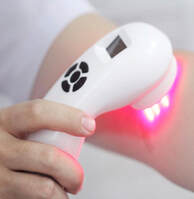 Use your cold laser to stimulate acupuncture points that boost immune function. CV 8, CV4, CV6, EX-B3, ST36 to dispelling cold and removing dampness, nourishing spleen and stomach, improve the Immune System. Stimulate each point 3-5 minutes, once per day. Haven't purchased a cold laser yet? Click here to view the laser I use. Use the coupon code ANGELIQUE at checkout for $20 off. 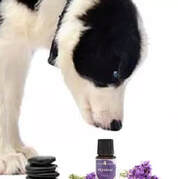 Essential oils have been proven to be antimicrobials. Use of essential oils such as tea tree, eucalyptus and thyme have been shown to be effective against viruses (view full article here). Remember when using essential oils, it is important to purchase high quality oils and dilute them using a carrier oil before use.  High quality nutrition and supplementation can greatly increase immune function. Eliminate "junk" food from diet and replace with fresh produce and quality proteins. Minimize intake of sugary, caffeinated and artificially sweetened drinks and replace with water. The following supplements have been shown to boost the immune system: Vitamin D3, Echinacea, Vitamin C, Elderberry and Probiotics. 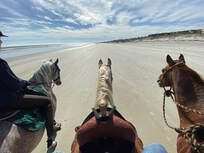 Take time to destress. Stress is a huge factor when it comes to disease susceptibility. Take time every day to play with your dog, pet your cat, ride your horse, get some sun and fresh air, red a book and do the things that make you happy! Having pets is one of the most rewarding experiences in life, but it can also be challenging, especially if you don’t know what to expect. A good pet-parent relationship should be positive, and a huge part of making that happen comes from what you do before welcoming a pet into your life. You can get ready for the challenge by reading up on everything you need to know, from the type of care they need to choosing the perfect pet and making a smooth transition. Lining Up Pet-Care Services In addition to stocking up on necessities, it’s important to find trusted sources for pet services, such as a good vet clinic, a groomer, and options for pet care whenever you’re away. If you don’t love the idea of boarding your pet in a kennel, a great alternative is to use a pet sitter. It’s easy to search for pet sitters online — just be sure to research your options by interviewing candidates and observing how they interact with your pet. Along with finding a vet you like, another thing to think about is whether you need pet insurance. First-time pet owners often find out — after the fact — that vet care adds up, but pet insurance helps make those costs more manageable. Similar to health insurance for people, different plans cover different services, and the costs also vary from one plan to another. In addition to considering these factors, make sure you choose a reputable company. One pet insurance company we recommend is Embrace because they have comprehensive coverage that includes preventative care, in addition to treatment when your pet gets sick or injured. When you want to provide the best care for your new pet, we also recommend looking into holistic animal care like the practices we feature at Holistic Animal Studies. There are simple things you can do to give your pet a healthier, more balanced life, such as providing whole foods and getting treatments like mental stimulation and bodywork. Finding the Perfect Pet The most common household pets are cats and dogs, and you may already have an idea of which one fits your family’s lifestyle. If you’re still on the fence, it’s smart to do further research into how to be a responsible dog owner or what to expect from having a cat at home. Once you’ve narrowed down your decision to a feline or canine (or something else entirely!), the next questions to consider are whether you want a specific breed, the best age, and where to search. Some first-time pet parents feel more comfortable getting a dog from a breeder so they can be sure they’re getting an animal with the temperament and traits they’re looking for. However, most responsible shelters do a great job of screening for an animal’s behavior and traits. If you’re thinking about adopting a shelter animal, the shelter’s staff can usually match you with a pet that meets your needs and lifestyle. Along with personality, other factors, such as an animal’s age and activity level, can be just as important. Cesar’s Way explains that many people make the mistake of assuming it’s best to adopt a puppy. Puppies can be amazing fun, but they also require more time and energy than adult dogs. Dog Time also recommends thinking about the amount of exercise you can provide an animal. All animals need exercise, but cats are content for you to play with them inside, whereas energetic dogs need longer walks in addition to playtime. Making a Happy Transition When you’re ready to bring your new pet home, the way you handle this initial transition can make an enormous difference in how well they adjust. It helps if you have already gotten your home ready for your new dog or cat so they’ll feel safe and welcome. It usually takes both humans and animals a little time to adjust to their new relationship. This is normal, so be patient! Bringing a pet into your life is a beautiful thing, and pretty soon you will both wonder what you ever did without each other. Photo Credit: Pixabay Article Written by: Penny Martin Animal Neuro-myofascial Release Technique, also known as ANMR, is a body alignment technique for both small and large animals. It utilizes a specialized tool that enables the practitioner to put motion into the soft tissues surrounding and adjacent to the vertebral column and other joints. This creates a combination of neurological input and soft tissue releases that allows the animal's body to "reset" itself leading to an improvement in posture, range of motion and gait. Is this a Chiropractic Technique?No, even though a tool is used that is similar to the Activator tool (a tool used in human chiropractic to perform Activator technique), this is not considered to be a chiropractic technique. Rather than using the tool to move bones, the tool is used to release soft tissues and provide neurological input through quick impulses. This technique is approved through the National Certification Board of Therapeutic Massage and Bodywork and is considered to be a soft tissue technique. Who can Perform this Technique?This course and certification is available to anyone who is already certified in animal massage therapy or is a licensed Veterinarian, Veterinary Technician or Doctor of Chiropractic. Animal massage therapists find this technique to be a great addition to their practice, allowing them to address body mis-alignments quicker and more accurately than can be done with massage therapy alone. Veterinarians have began adding this technique to their practice to create additional revenue and offer clients with a non-medication, non-surgical treatment option for animals suffering from musculoskeletal issues. Many Doctors of Chiropractic have enjoyed adding ANMR to their practice to provide animals with effective and safe body alignment. State animal massage laws must be followed when practicing ANMR. What Conditions can Benefit from ANMR?
Ready to Learn More?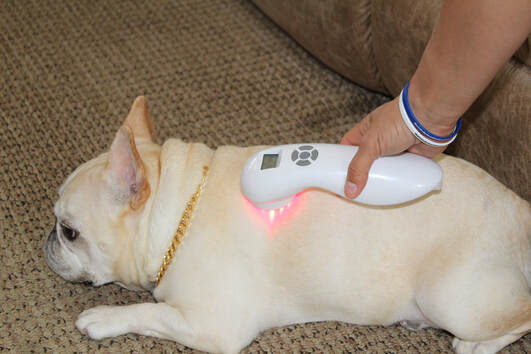 Yes, both small and large animals can greatly benefit from cold laser therapy to reduce pain associated with injuries and speed up healing time. What is Cold Laser?LASER stands for Light Amplification by Stimulated Emission Radiation and utilizes different wavelengths of low level light to stimulate the animal's tissues. It is called "cold" not because it is a form of cryotherapy but because unlike other medical lasers, this form does not give off heat. How does it work?The laser stimulates the animal's cells causing the mitochondria to produce more ATP (energy utilized by the cells) which allows for quicker cellular healing and a reduction in inflammation. Cold laser therapy works well for both acute and chronic injuries. Types of Cold Lasers:Class 1 & 2: can be purchased over the counter and has a max power of 5mW continuous diode output. Least powerful of the cold lasers. Class 3: designed for practitioners, but can be purchased for at home use as well. Has a max power of 500mW continuous laser diode output. This is the class of laser that I recommend for my students to purchase. Class 4: Any laser with output of 500mW or more. Mainly used by medical professionals. Gives off heat and can damage eyes if used without protective glasses. Contraindications to use:
Laser I recommend:If you are looking for an effective, easy to use and easy to handle laser, I highly recommend the Class 3 laser in the photographs. I have personally used this laser on many animals and myself with great results. This laser is very affordable, but requires longer treatment sessions than the next laser I recommend below. Overall, it is an excellent affordable option to add Cold Laser Therapy to your practice. When purchasing through the link above, use the coupon code ANGELIQUE for $20 off the white laser!!!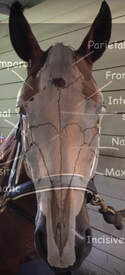 Cranial Anatomy The cranium of the horse is made of flat bones that articulate with each other through joints called sutures. These sutures allow the bones to move slightly leading to a slight expansion and contraction as the cerebral spinal fluid (CSF) is pumped through the cranium. The movement of these bones is the basis for craniosacral therapy. Cranial Bone Misalignments The cranial bones can become "jammed" due to trauma/injury or the process of traveling through the birth canal when the horse is born. When the bones shift and become "stuck" in this position, it will lead to decreased movement of the bones as the CSF is pumped through the cranium. This can ultimately lead to symptoms such as head aches, difficulty concentrating, runny eyes or nose, head shaking and other behaviors. Visually, it can be noted as asymmetry in the face. Re-aligning the Bones The cranial bones can be brought back in to proper alignment using specific craniosacral techniques to release the bones. Chronic misalignments will often take multiple sessions to resolve fully. Most horses will begin to show a decrease in symptoms following the first session. 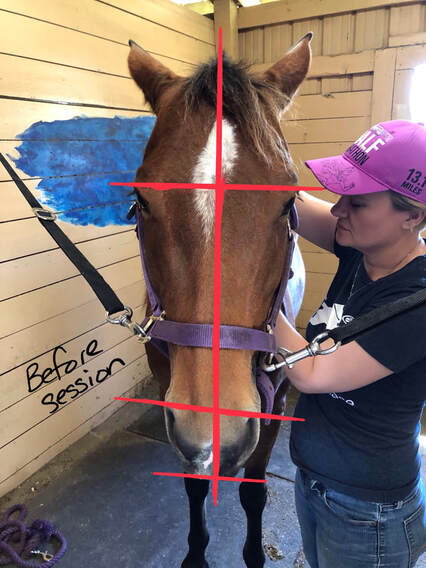 Looking for Asymmetries A good way to check for asymmetries is to take a picture of the horse's head when standing directly in front of them. You can then draw a line vertically from the mid section of the top of their head (by the poll) to the middle of their upper lip/nose. Next draw horizontal lines connecting the top of each eye and the top of each nostril. An additional horizontal line at the bottom of the lips can also be drawn. If the lines are all perpendicular to each other (create 90 degree angles) then the horse's skull is symmetrical. If 90 degree angles are not found, then asymmetry due to shifting of the cranial bones is present. Checking for Changes After releasing the appropriate cranial bones, you should then take another picture of the horse's head and re-draw the lines to determine if improvement has been made. This picture above, which was taken immediately after the first session, shows little improvement. Due to the chronicity of the symptoms and the small improvement, kinesiology tape was applied over the parietal and frontal bones and nasal sutures. The picture below shows the amount of asymmetry present following 24 hours of wearing the tape. Cranial Bone Releases - 2nd Session The kinesiology tape was left on another 24 hours (48 hours total) and then was removed before the second craniosacral session. During the second session, a sacral and tail release was performed before releasing the cranial bones. The picture below shows the results after the cranial bone releases were performed. Note a drastic improvement in the nasal and lip lines. Follow up This horse is experiencing a decrease in symptoms and an improvement in attitude. She will continue with monthly craniosacral sessions at this time to further improve facial symmetry, reduce the reoccurrence of symptoms and improve proper function. Special thanks to Mary Beth Nunes on her assistance in performing the primary CST session! Want to learn more about CST and the cranial bone releases?Acupressure is the manual stimulation of specific acupuncture points. Acupuncture was developed in Ancient China with references to acupuncture procedures dating back to as early as 198 BCE. Traditional acupuncture utilizes thin needles that are applied to specific points to stimulate the energy flow. Acupuncture medicine teaches that all people and animals have energy channels running through their bodies called meridians. The flow through these meridians can become altered due to trauma, stress and environmental factors. Acupressure is a way to influence these meridians without the use of needles. Yes, animals can greatly benefit from acupressure!Acupressure is becoming more common as an animal therapy option for both small and large animals. Animals suffering from arthritis, stiffness, organ dysfunction, allergies, weakened immune systems and other ailments can benefit from acupressure sessions. Remember that acupressure (along with other forms of bodywork) should not replace veterinary medicine and you should always consult with your veterinarian before adding bodywork to your animal's health plan. Case Study from one of Our PractitionersWendy is a 24yo QH/TNWalker who has had issues with her cycle since she was in her teens. More recently, when she cycled, she’d get colic like pain to her flanks and would roll. Owner would call the vet to come out thinking it was colic, and Wendy would pass feces with no issues, and was given banamine. She is so bad with her cycle that she pees on the females in the pasture and would nudge like a male would on a female. -Opened using the Bladder meridian. Once began the process, Wendy immediately started licking and chewing. Did 3x each side. - Association Points - none of the points along the spine triggered a response. Slight response on BL20 BL 21 - Alarm points - she was reactivate CV4 and CV 5 and CV 12 . She would take deeper breaths when these were pushed. Which is interesting considering the CV is the source point we worked on. - Source point - Conception Vessel. She had great responses to these points. She’d breath deep especially on CV 4 5 and 12. She also liked the CV24 point too. - Closed the vessel with the bladder meridian again. She licked and chewed through this process too. I varied the speed as well. Horse appeared brighter and more content after the session. Prior to the session she seemed lazy or mellow. She was willing to do the session and when asked permission, she leaned into my chest with her head. Told Client to let me know if her mood has changed in field and whether her cycle has changed for the better. Will have the owner keep I touch and if need be, would do another session in a week or two. Since Wendy was so open and receptive to the treatment, it would be interesting that she had a blockage of energy that built up over time. A week later I did the same therapy with her to reinforce the release. Wendy had experienced a colic episode, although very slight in comparison to her other episodes. That was why I came out a week later. Since the 2nd session, she was free of any episode and her hormonal imbalances seemed to be in check. Her eratic behavior during her cycle was gone and she was a happier horse with the herd. ~Victoria Whitehead Want to learn more about acupressure?Tallgrass Animal Acupressure Institute in Colorado offers hands on and online courses in acupressure for both small animals and horses. They also sell high quality text books and charts.
The suspensory ligaments are found on the lower legs of the horse (below the knee on the front legs and below the hock on the hind legs). These ligaments provide elasticity to the bones found in the lower legs allowing the horse to run optimally and prevents excessive extension of the fetlock joint. Suspensory ligament injuries are common in performance horses due to repetitive stress. Supporting the suspensory ligaments with kinesiology tape is great way to prevent injury from occurring (or preventing further injury) and also decreasing inflammation post injury. Decreasing Inflammation Following Injury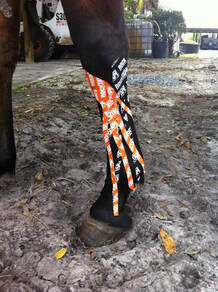 With acute suspensory ligament injuries, the inflammation reduction taping should be used. To apply this, cut 2 strips of tape into the fan cuttings and place them on the lower leg with the bases superior to the fingers. Overlap the fingers along the area of swelling. Adding SupportOnce the inflammation has lessened, you can add support to this area by placing 3 strips of tape on the medial, lateral and posterior portions of the lower leg. Next, add another I strip of tape running along the fetlock joint with 50% stretch in the center and no stretch on the ends. Last, add 1-inch anchors on the top and bottom. Replace every 2-3 days for optimal results. Interested in learning more about kinesiology tape?There are some Reiki professionals who frown upon distance attunements because they feel as though the Master is not able to transfer their energy efficiently to the student and therefore the student will not be able to adequately perform healing Reiki sessions. There are many different ways that Reiki Masters who teach online courses are performing distance attunements and some of those methods are more effective than others. In this article, I will discuss some of the distance attunements that are currently being performed and which method I feel to be the most effective. Non-specific, pre-filmed or pre-performed attunementsWhen reading negative articles or comments about distance Reiki attunements, this is normally the form of attunement they are referring to. In this scenario, the Reiki Master performs an attunement at the time they put together their online course, CD course or written course and send that attunement out into the universe so that their students can pick up on it when they are ready. Obviously this type of attunement is very non-specific and while I can not say that it is completely un-effective, I do personally believe that it is one of the least effective methods. Non-specific group attunementsDuring these distance attunements, the Reiki Master will normally pick a specific day and time that they perform their attunements every week. For example, it could be every Monday at 6 pm. The students who choose to tune in to the attunements at that time can do so. There is not direct communication between the Master and student. While these are not completely ineffective (many students experience waves of energy and other sensations during the attunement), I personally feel as though this is not the most effective way to perform a distant attunement. Specific, individual, scheduled attunementsThis is the method of distance attunement that I utilize and in my opinion it is the most effective way to perform a Reiki distance attunement. When a student is ready to schedule their attunement, they contact me and we choose a time and day that works for both of us. Immediately before the attunement begins, I contact the student to make sure they are ready and I also contact them immediately following the attunement to let them know it is completed. Similar to performing a Reiki distance healing session, I utilize the distance symbol (Hon Sha Ze Sho Nen) to project my energy to the student. I focus on their name and location to better hone in on them. The student is in a relaxed, meditative state and receptive and open to the energy I am sending. I follow a specific attunement protocol which varies depending on the level of attunement I am performing. I also utilize crystals to enhance the effects of the sessions (the crystals are chosen based on the student I am attuning). This is a very specific process, which in my opinion (which is based on the feedback I receive from students along with my intuition) is the most effective way to perform a distance Reiki attunement. Is there a right way?Some Reiki Masters will say yes, but in my opinion there is not a right or wrong way to perform a Reiki attunement. Every student processes energy differently and will therefore have a different experience. There is not a right or wrong way to experience a Reiki attunement and the effectiveness of an attunement will always be subjective in nature. My personal belief is that if the Master and student both have the same intent, are focused on what they want to accomplish during the attunement and are open and positive, the desired results will happen. What do you think? I'm interested in hearing your thoughts and experiences in the comments below.If you are a canine massage therapist or student, you have likely had to deal with uncooperative dogs while trying to perform therapeutic massage and bodywork. This article will provide you with some suggestions to enable you to complete the session. The Hyper DogDealing with a dog that won't stay still? This can be extremely challenging for a massage therapist.
Shorter Session LengthsHyper dogs usually also have shorter attention spans. Be sure to make your treatment sessions shorter with these dogs and utilize massage techniques that require shorter durations.
The Aggressive DogAggressive dogs are not only frustrating to try to work on, but they can be dangerous as well. Always make sure to use proper precautions such as muzzles and restraints when working on aggressive dogs. Here are some additional suggestions.
Removing the OwnerSome dogs are aggressive when their owner is present because they feel protective of the owner or they may be picking up on emotions and concerns that the owner is projecting. Removing the owner from the room can often solve this problem and allow the dog to relax and enjoy the session. Have Many Tools in Your ToolboxBeing able to provide client's dogs with an array of different techniques can allow you to find the technique that will work best for that particular dog. Some dogs will enjoy hands on massages, while others will prefer less invasive forms of treatment such as craniosacral therapy, reiki and kinesiology tape. Having a lot of "tools" (modalities) in your "toolbox" can allow you to provide each dog with the best individual care possible. Want to learn more techniques?The Reiki technique was developed in Japan by Mikao Usui. This is a healing energy technique that utilizes life energy force that is transmitted from the practitioners hands. This technique was originally developed for people, but has been used frequently on animals as well. Dr. Angel is a trained Reiki Master she developed an animal healing symbol that she believes helps intensify the Reiki energy when working on animals. Reiki energy can help an animal decrease pain, provide them emotion relief and allow their bodies to naturally heal themselves. While Reiki treatments do not replace veterinary medicine or other forms of animal bodywork, it can be very beneficial in working with all types of animals including those who do not want to be touched or are afraid of human contact.
Those who practice Levels II and III Reiki are able to send Reiki energy over distances, allowing them to work on animals who are not immediately in front of them. In Dr. Angel's online course, she teaches students how to perform Reiki healing on animals and provides them with the necessary attunements so that life energy can begin flowing freely through them. Only those who have undergone Reiki attunements are able to perform Reiki sessions. How Does Our Course Differ From Traditional Reiki Courses? While traditional Reiki courses are focused on human healing, our course is specifically designed for animal healing. The course covers equine, feline and canine behavior and handling, to better help our practitioners read an animal's body language. It also teaches our students an Animal Reiki symbol that enhances the healing energy when working on animals. Those who are human Reiki practitioners can benefit from taking this course as well as those who have never completed a Reiki course. To learn more about Dr. Angel's course, click here. If you perform animal massage and bodywork, you have probably wondered about carrying liability insurance to cover any issues that may arise during a session. Your next questions is likely, how do you go about becoming insured? How to Obtain It: To obtain liability insurance, the best option is to join an animal massage association such as the International Association of Animal Massage and Bodywork. They provide their members with malpractice insurance options. In order to qualify to join IAAMB, you must be able to show that you have completed at least 100 hours in Animal Massage courses. Our massage certification courses are approved through IAAMB and will allow you to become a member.
How Much Does it Cost? A typical policy in the USA is only $175 per year! The low risk involved in animal massage allows the insurance costs to stay low. Compare this to a human surgeon who spends an average of $15,000 per year on malpractice insurance. The level of risk will dictate the cost. Equine Sports Massage is a form of massage therapy that focuses on equine athletes, allowing them to perform optimally and reduce the chance of injury by maximizing range of motion and decreasing muscular restrictions. Horse athletes are often times asked to perform maneuvers that can cause repetitive stress injuries. Like human athletes, they can benefit from maintenance bodywork as well as recovery treatments. What is the Equine Myo-manipulative Functional Therapy Certification?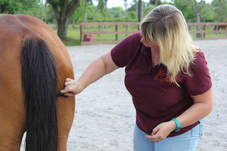 Myo-manipulative Functional Therapy literally means making changes in the muscles to achieve proper function. This is a form of sports massage that rather than just focusing on the massage techniques, it also addresses physical therapies and exercises and can further improve the horse's function and ability to perform at an optimal level. Practitioners who complete our certification course receive the prestigious title of Equine Myo-manipulative Functional Therapist (EMFT). Benefits of Becoming Certified as an EMFTWether you are looking to start a career as an Equine Massage Therapist or are already certified and are looking to add additional credentials to your name, this course is for you. In this 100 hour course, you will learn multiple massage techniques including Swedish, Shiatsu, Myo-fascial Release, Gua Sha and more. You will also learn in depth examinations, physical therapies, saddle evaluation, how to run an Equine Massage business, how to interact with veterinarians and much more.
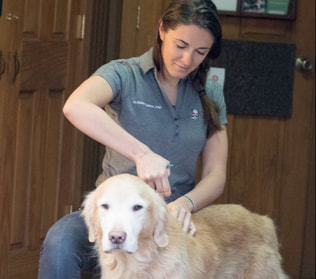 More and more animal owners are seeking non-invasive, drug free treatments for their dogs and cats. Offering animal massage, kinesiology taping, craniosacral therapy and body alignment out of your practice will allow these owners to utilize these techniques in addition to traditional veterinary treatments and under your guidance. Generate more income into your practice by offering animal bodywork services!Our courses are completely online, allowing yourself and/or your technicians to complete the courses from any location. Our courses can be started at any time and they never expire, so you can work at your own pace and will always have access to the course content. Our courses are approved through the National Certification Board of Therapeutic Massage and Bodywork (NCBTMB), the International Association of Animal Massage and Bodywork (IAAMB) and the International Veterinary Chiropractic Association (IVCA). Services to Consider Offering:Massage Therapy: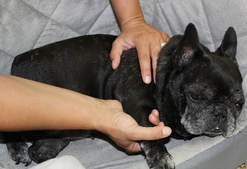 Many of your clients already experience the benefits of massage therapy first hand and naturally begin to wonder if their canine and feline companions can benefit from it as well. The answer is yes! Massage therapy can help restore proper range of motion, decrease pain and tightness and improve gait. Our online massage certification courses will teach your staff how to evaluate animals and perform massage techniques such as Swedish, Myofascial Release, Acupressure and Gua Sha. Kinesiology Tape: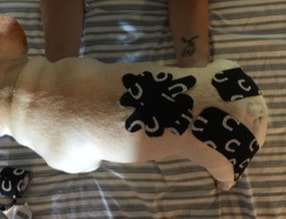 Kinesiology tape is growing as a popular modality not only for human patients, but animals as well. A recent study published in the Journal of Equine Veterinary Science demonstrated a reduction in swelling in horses that were taped using kinesiology tape (the inflammation reduction taping) following arthroscopic tibia-patellofemoral surgery. Kinesiology tape has also been shown clinically to improve an animal's gait and reduce the pain sensation. Our courses will teach you how to properly handle, cut and apply the tape. Craniosacral Therapy: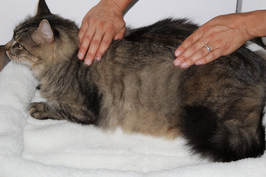 Craniosacral therapy is a bodywork technique that addresses the craniosacral rhythm which is found in all animals. This rhythm is similar to the animal's heartbeat, but is a result of the pumping of Cerebral Spinal Fluid (CSF) rather than blood through the heart. The CSF nourishes the Central Nervous System (CNS) and changes in its flow can directly impact it. CSF flows from the skull of the animal (cranium), down the spinal cord to the sacrum (hence the name craniosacral). Craniosacral therapists can enhance and correct the flow of CSF through specific techniques and protocols. Body Alignment: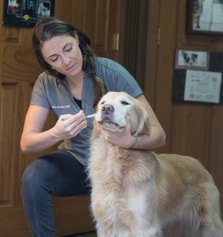 You and your staff can learn how to align the vertebral segments of dogs and cats utilizing our Animal Neuro-myofascial Release (ANMR) Technique. This technique utilizes a tool to provide a safe, gentle and effective impulse into the spinal segments and soft tissues of animals to neurologically "re-set" the area. ANMR has shown to clinically reduce pain and symptoms associated with disc bulges, arthritis, soft tissue injuries and more. Interested in offering multiple techniques?Prospective students often ask me what sets our courses apart from other online animal massage courses and I decided to write this blog to help answer that question. 1. High Quality Material
2. Unlimited Access With No Deadlines3. Exceptional Support
4. Support Group of Peers
5. Approved Through Numerous Organizations
Whether you are a professional looking to add a new technique to your practice, someone wanting to start a new career in the animal bodywork industry, or a pet owner looking for holistic solutions for your own pet, we have courses for you! Please consider enrolling in one of our courses. You won't regret it! See What Others are Saying!Unlike dogs and horses, cats rarely show signs of lameness (altered gait), making it difficult for cat owners to determine if their cat could benefit from some form of bodywork. Dog owners often seek bodywork for their dogs when they notice that they are having trouble jumping up or down from furniture, are having difficultly standing up after resting, are reluctant to go on walks, cry out when touched or picked up or favor one or more legs while moving. Cats are usually more stoic than dogs, so cat owners need to be aware of other signs of feline body pain and discomfort. Signs of Feline Body Pain and Discomfort:
These signs listed above can also indicate serious health problems, so it is important to have a veterinarian examine your cat prior to seeking bodywork. Types of Bodywork Cats Can Benefit From:
Want to become certified in feline bodywork?Calming Taping: Kinesiology tape can be place on your dog to have a calming effect similar to the "thunder" shirt. Step one: Cut a piece of tape that is long enough to wrap around your dog's chest and across it's back. Step two: Tear the paper of the tape in the center and using 50% stretch, lay the tape down in the center of your dog's chest. Step three: Remove the paper on one side and lay it down with 20-50% stretch as shown in the picture. Step four: Repeat on the opposite side Step 5: Cut a second piece of tape that is long enough to wrap around your dog's back Step 6: Tear the paper in the center and place the center of the tape down with 50% stretch over your dog's lower back Step 7: Remove the paper on one side and lay it down with 20%-50% stretch doing along your dog's ribs and under torso towards their front arm Step 8: Repeat on the opposite side Aromatherapy Relaxation Blend:
Apply 1-2 drops of this blend directly to the kinesiology tape. Always be sure to use high quality essential oils when performing aromatherapy! Interested in learning more about canine kinesiology taping? Check out our online course! We offer a certification course for professional and a non-certification course for dog owners.
Looking to start a career as an animal massage bodyworker or looking to add additional certifications to your current practice? Check out our money saving course bundles! Our Basic Bundles includes our Equine or Canine Myo-manipulative Functional Therapy (Massage) Certification, Kinesiology Taping Certification and Craniosacral Certification Courses!On Sale On Sale Equine Bodywork Certification Bundle
$2,000.00
$1,800.00
If you are looking to start a career as an Equine Bodyworker, then this bundle is for you! Included in this bundle are our Equine Myo-manipulative Functional Therapy Certification Course (Massage), Equine Kinesiology Taping Certification Course and Equine Craniosacral Therapy Certification Course. There is a total of 3 courses in this bundle! You save $200 by enrolling in this bundle! Remember to check your local laws before practicing animal massage! On Sale On Sale Canine Bodywork Certification Bundle
$2,000.00
$1,800.00
If you are looking to start a career as a Canine Bodyworker, then this bundle is for you! Included in this bundle are our Canine Myo-manipulative Functional Therapy Certification Course (Massage), Canine Kinesiology Taping Certification Course and Canine Craniosacral Therapy Certification Course. You save $200 by enrolling in the bundle! There isa total of 3 courses in this bundle. Remember to check your local laws before practicing animal massage! Want to incorporate body alignment into your practice as well....our Ultimate Bundles include all the courses in the basic bundle, plus our Animal Neuro-myofascial Release Technique Course!On Sale On Sale Ultimate Equine Bodywork Certification Bundle
$2,900.00
$2,610.00
If you are looking to start a career as an Equine Bodyworker, then this bundle is for you! Included in this bundle are our Equine Myo-manipulative Functional Therapy Certification Course (Massage), Equine Kinesiology Taping Certification Course, Equine Craniosacral Therapy Certification Course and Animal Neuro-myofascial Release Technique Certification Course (body alignment technique). There is a total of 4 courses in this bundle! You save $290 by enrolling in the bundle! Remember to check your local laws before practicing animal massage! On Sale On Sale Ultimate Canine Bodywork Certification Bundle
$2,900.00
$2,610.00
If you are looking to start a career as a Canine Bodyworker, then this bundle is for you! Included in this bundle are our Canine Myo-manipulative Functional Therapy Certification Course (Massage), Canine Kinesiology Taping Certification Course, Canine Craniosacral Therapy Certification Course and Animal Neuro-myofascial Release Technique Certification Course (body alignment technique). You receive 4 courses in this bundle! You save $290 by enrolling in the bundle! Remember to check your local laws before practicing animal massage! Looking to work on both dogs and horses? This bundles includes ALL 7 of our certification courses!If you are looking to start a career as a Canine and Equine Bodyworker, then this bundle is for you! Included in this bundle are our Canine and Equine Myo-manipulative Functional Therapy Certification Courses (Massage), Canine and Equine Kinesiology Taping Certification Courses, Canine and Equine Craniosacral Therapy Certification Courses and Animal Neuro-myofascial Release Technique Certification Course (body alignment technique). You save $437.80by enrolling in the bundle! There is a total of 7 courses in this bundle! Remember to check your local laws before practicing animal massage! So, you have already found out your state's laws, completed a certification course and now you're ready to start making some money doing what you love...massaging horses! The only problem is no one knows you exist and the phone isn't ringing. Here are some tips to help you start bringing in new clients. Tip #1:Create your brand. Create a unique logo and company name so people can recognize it. Your brand should clearly show what it is that you do. Once you find the perfect logo, you need to get it out there so people will see it! Make shirts, hats, decals for your vehicle, pens to hand out at barns and put your logo on all your paperwork. Tip #2: Build a website. Creating a high quality website has never been easier. With host sites like Weebly that allow you to easily build and edit your own website, there is no reason why an equine bodyworker shouldn't have a website. Be sure to include information about conditions that can benefit from your services, information about yourself and your credentials, testimonials, any specials you are currently offering and tons of high quality photographs! Click here for $10 off a new Weebly account. Tip #3: Create Social Media Accounts. Social medias such as FaceBook, Twitter and Instagram are great places to build up followers who could potentially become clients. It is also a create place to keep in contact with your current clients by posting blogs, testimonials, specials and pictures of you working. It is now easy to run advertisements through these medias where you can choose your audience by location, interests, gender, age and more! Tip #4: Pass out flyers and business cards. Flyers and business cards are a great way to advertise at barns, feed stores, tack stores and other equestrian venues. When creating a flyer, make sure to keep it short and concise. Focus on what you can do for their horse and also what your credentials are. A high quality photograph of you working on a horse should be included. When creating business cards be sure to include your contact info and website along with any social media sites. Always list your certification number on your card and state that you work through veterinary affiliation or referral if it is required in your state. Don't forget to add your logo! Tip #5: Do demonstrations. Demonstrations are a great way for you to show people what you can do and also educate them on the benefits of equine massage. You could either do a general massage demo explaining what you are doing as you work or you could do a specific demonstration focusing on a specific condition (like TMJD) or technique (kinesiology taping demo, myofascial release demo, etc). Pass out flyers and cards during the demo and consider offering discounted sessions to those who book an appointment immediately following the demo. Tip #6: Set up meetings/lunches with local veterinarians, trainers, dentists, farriers, etc. Setting up a lunch can be as simple as bringing sandwiches to an office during lunch and explaining the services you offer while they eat (if you plan one for a veterinary office make sure to include the staff!). Be sure to make it short and concise and leave them cards and referral pads to make it as easy as possible for them to refer to you. When interacting with veterinarians remember that their time is limited. Your personal veterinarian, farrier, equine dentist, chiropractor (and whoever else you use for your horses) are the best people to start with. Tip #7: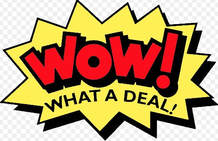 Offer package deals and first time discounts. Discounts can be a good way to persuade horse owners to try you. Once they see what you can do they are likely going to refer you to their friends, so provide them with business referral cards. With each card that they pass out, their friend will receive a discount on their horse's first session and they will also receive a credit on future appointments. This is a great way to motivate your clients to help advertise your services. Be sure not to discount your services too much though because then people will devalue them. Make sure they know what you are worth! Tip #8: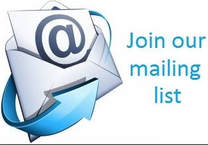 Create an email list and send out monthly newsletters. Start to build your email list by adding client's emails to it. You can also have allow people who visit your website (potential clients) to join your newsletter list. This is a great opportunity to share blogs about the techniques you provide, case studies, new techniques you have added to your practice and testimonials. You can also add seasonal tips such as blanketing in the winter, keeping your horse cool in the summer, horse treat recipes, etc. Tip #9: Offer your services at local horse shows and events. There are always a lot of horses at shows, clinics and organized trail rides. Set up a table at these events so that you can pass out flyers and cards to potential future clients and also offer your services during the event to those who would like to have their horse worked at while they are there. This is a great way to meet a lot of horse people in one day! Tip #10: Send follow up letters. A follow up letter is a great way to thank a new client for using you and also serves as a way to let them know about additional services you offer that they may not be aware of. You can also include referral cards and explain your referral program in your follow up letter. If a horse was referred to you by a veterinarian or other equine professional always send them a follow up letter as well thanking them for the referral and sharing your findings and treatment plan (make sure to get the owner's permission before sharing these details). I hope these suggestions help you! Most importantly remember to have fun doing what you love.....massaging horses!You can now add techniques such as kinesiology taping, craniosacral therapy and animal neuro-myofascial release (AMNR) technique to your practice without having to travel! Dr. Angelique Barbara offers these online continuing education courses to animal bodyworkers through a web course host that allows the student to start the course whenever it is convenient to them and to complete it at their own pace. “Our courses never expire”, Dr. Barbara says, “allowing our students to take as much time as needed to complete them”. “The other great benefit”, continues Dr. Barbara, “is that students can log back in to the course at any point in the future to review the material and see what new material has been added”. You may be wondering how one can adequately learn these techniques through an online format? Dr. Barbara explains that she has developed a system of learning that is highly effective. This system consists of watching lectures, reading information, watching step by step demonstrative videos, practicing the techniques and then re-watching the demo videos. Students have their technique applications assessed through video submissions and case studies. “The great thing about taking one of our online courses is that you can watch the videos as many times as you need to and can practice the techniques while watching the videos off a tablet or your phone”, says Dr. Barbara. “I have had students who have attended one of my in person seminars and then later took one of my online courses, state that they learned more through the online course because they were able to review the material, while they had a tendency to forget things from the in person course”. Dr. Barbara has been teaching animal bodywork courses for over ten years, but just launched her online courses several years ago. Since that time she has acquired students in over 30 countries and continues to receive positive feedback. Maria Sorgie, an equine sports massage therapist who took Dr. Barbara’s equine kinesiology taping certification course claims that it was the best thing she ever invested in. Dr. Barbara says that the thing she loves the most about teaching online courses is that she is able to spread her knowledge vast distances and has the opportunity to interact with people who would not have been able to travel to her for a seminar. Craniosacral therapy is a bodywork technique that addresses the craniosacral rhythm which is found in all animals. This rhythm is similar to the animal's heartbeat, but is a result of the pumping of Cerebral Spinal Fluid (CSF) rather than blood through the heart. The CSF nourishes the Central Nervous System (CNS) and changes in its flow can directly impact it. CSF flows from the skull of the animal (cranium), down the spinal cord to the sacrum (hence the name craniosacral). Craniosacral therapists can enhance and correct the flow of CSF through specific techniques and protocols. HistoryDr. William Sutherland, an osteopathic physician who was fascinated by the structure and function of the bones of skull, founded Cranial Osteopathy in the early 20th century. He initially experimented on himself and found that he could influence his cranial rhythm (as well as cause or relieve illness) by putting specific pressure on certain cranial bones. In the 1970's Dr. John Upledger, another osteopathic physician, expanded on Dr. Sutherland's work after he became interested in cranial rhythm when he saw it first hand while assisting in an operation and noticing rhythmic movement of the patient's spinal cord. Dr. Upledger was able to develop techniques to directly influence this rhythm and had the opportunity to research the craniosacral system while working at Michigan State University. He later created courses to teach others how to perform craniosacral technique and today the technique is practiced by thousands of practitioners all over the world. Craniosacral Technique for AnimalsNumerous practitioners, including myself, began to practice the craniosacral techniques on animals and quickly realized that they can benefit from it just as much as people can. Animals also have a craniosacral rhythm that can become altered due to injuries and stresses. Animals who receive regular bodywork (massage and chiropractic) and have pattern of re-occuring issues (won't hold an adjustment, end up tight in the same areas shortly following a massage) can benefit from a combination of craniosacral therapy and other forms of bodywork. The craniosacral therapy will allow the animal to "unwind" the kinks and twists in their fascia that is caused from repeated stresses allowing their bodies to stay in alignment following a chiropractic adjustment or allowing the muscles and other soft tissues to remain less restricted longer following a massage. Cranial Bone Alignment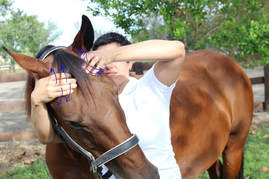 Similar to humans, animals have multiple bones that make up their skull. These bones are attached by sutures, which are a specialized joint that allow for very subtle movements so the bones can expand and contract with the CSF pumping. These bones can become jammed or misaligned. This can be a result of birthing (the animal's skull can become compressed in the birth canal) or it can be the result of injury. Cranial bone alignment techniques allow the practitioner to make subtle movements in these bones which allow them to move more freely. This can help with anything from headaches and lack of concentration to decreased proprioception and attitude problems. Learning More Practitioners who would like to add craniosacral therapy to their animal bodywork practice are welcome to enroll in our online certification course. This course covers a 10 step CS protocol, advanced techniques, cranial bone alignments and an energy healing technique. Many dogs will experience some degree of pain in their lifetime. While some dogs tend to be more stoic about it, other dogs are more expressive when any kind of discomfort is present. Are you able to tell if your dog is in pain?....and if so, what do you do about it? Signs that a dog is in pain include:
If your dog is showing any signs of pain, it is very important to have them evaluated by a veterinarian.If your vet determines that your dog is experiencing musculoskeletal pain, there are a few things you can do give them some comfort. Massage Therapy
Body Alignment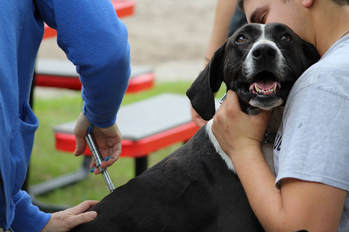 Chiropractic and other body alignment techniques can aid in reducing your dog's musculoskeletal pain by aligning their spines and improving neurological communication. Be sure to do your research when choosing a practitioner for your dog and find someone who is fully qualified. When done correctly adjustments can aid in reducing symptoms due to intervertebral disc disease, arthritis, muscle spasms, neck and back pain, leg weakness and more. Kinesiology Tape
Remember to always have your dog seen by your veterinarian before trying any of these techniques and ask your vet if your dog is a candidate for soft tissue work. |
AuthorDr. Angelique Barbara is the founder of Angel's Animals LLC, a company that has developed online animal bodywork courses for both owners and professionals. Dr. Barbara's unique teaching style along with the dynamic layout of the courses allows people of different educational backgrounds from all over the world to benefit from her knowledge. Archives
March 2024
Categories
All
|

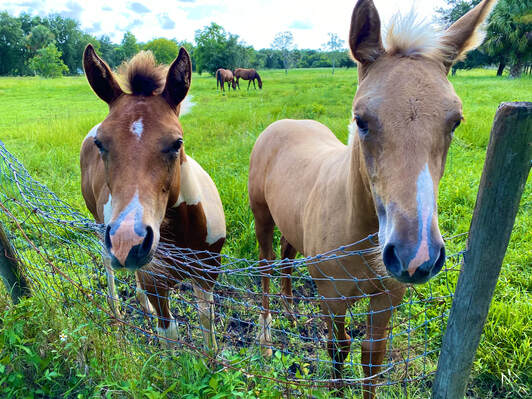
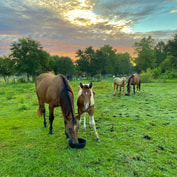


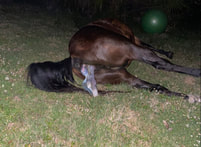
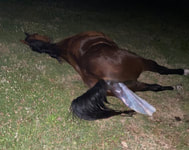
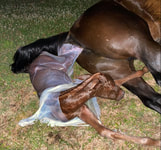
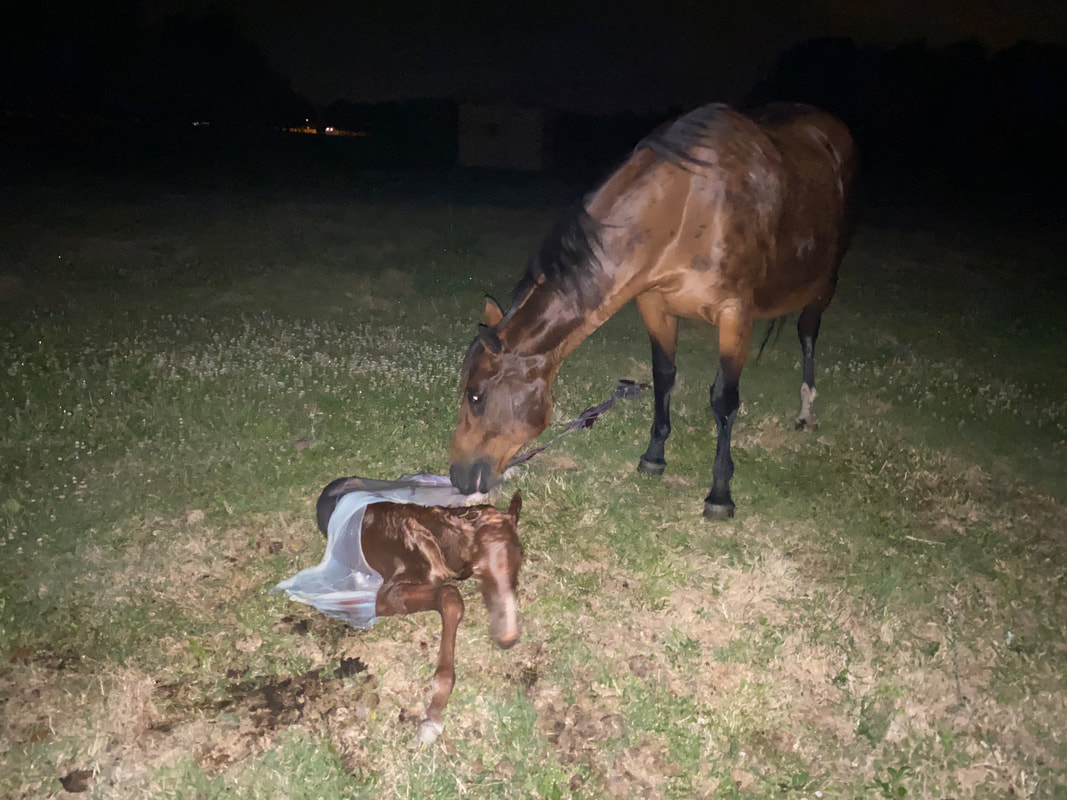
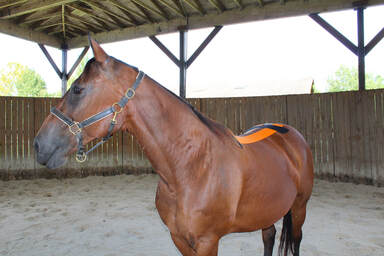
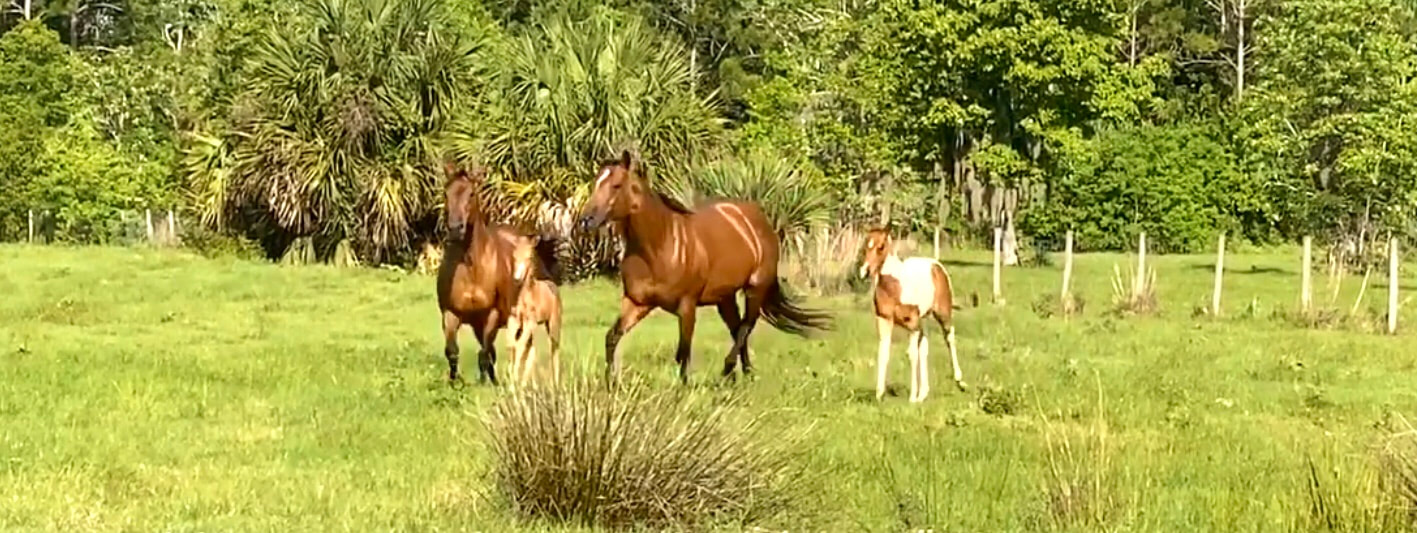
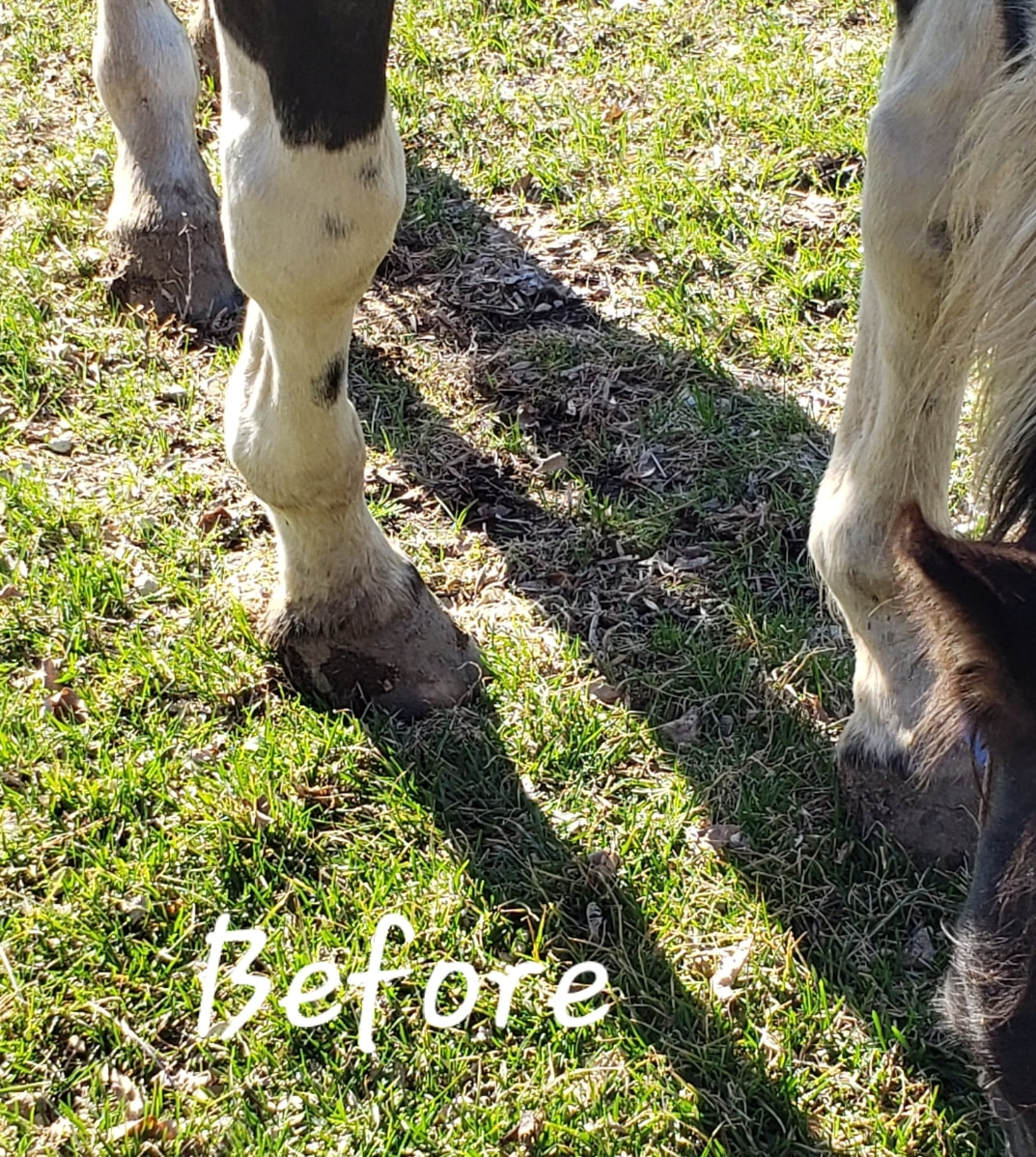
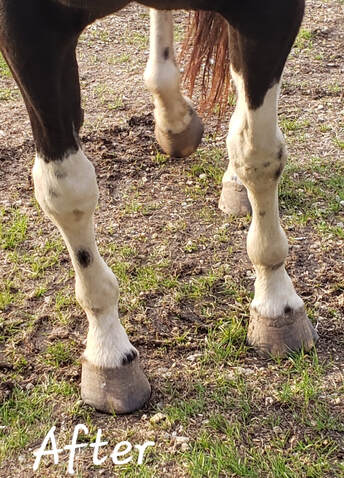
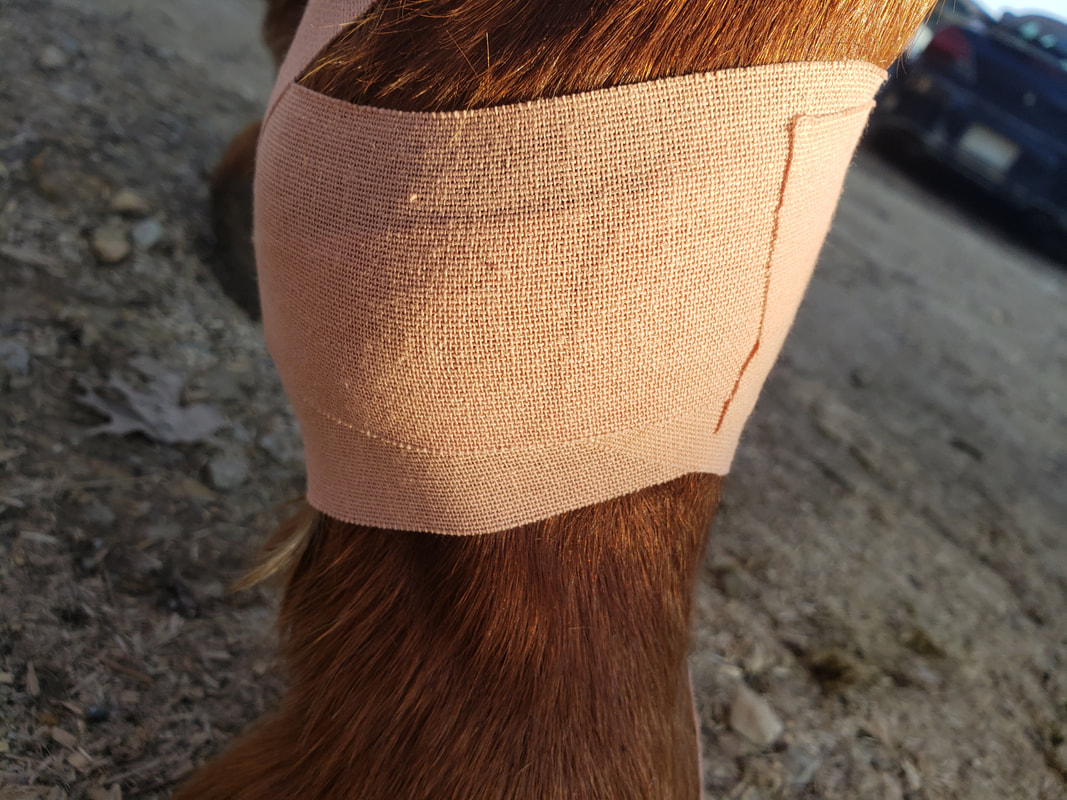
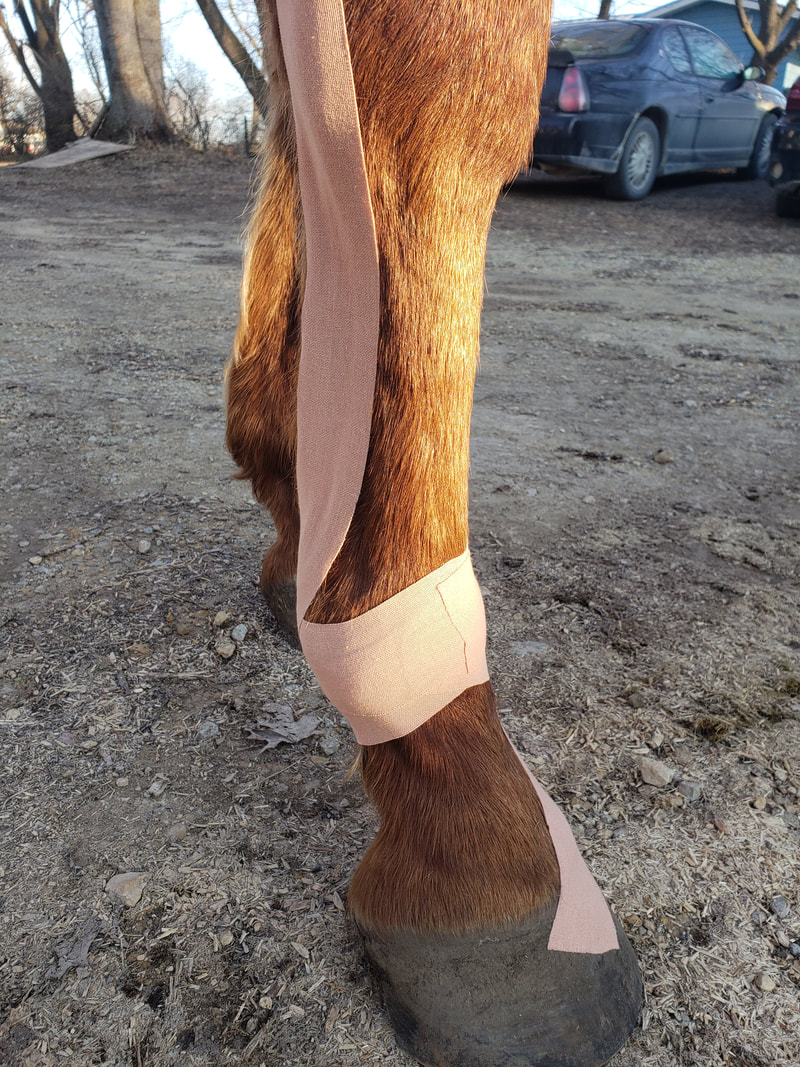
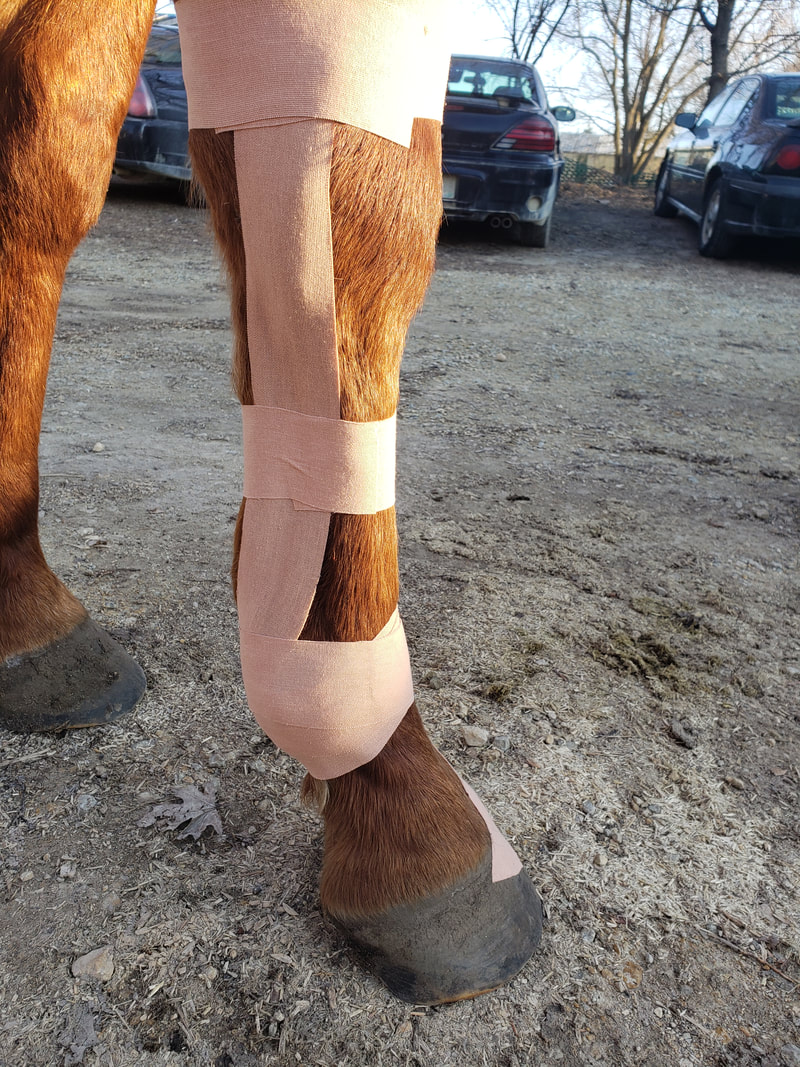
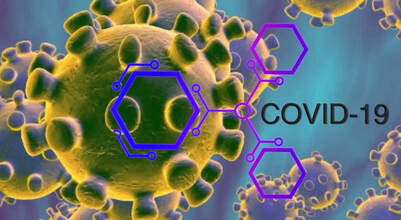
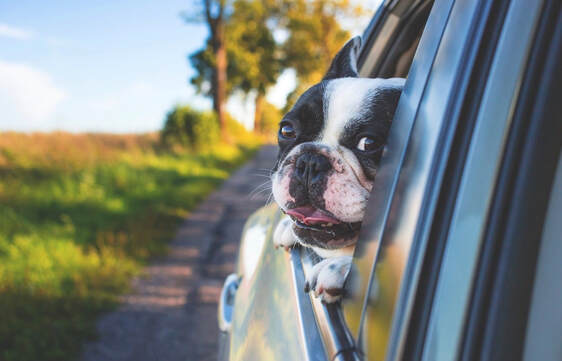
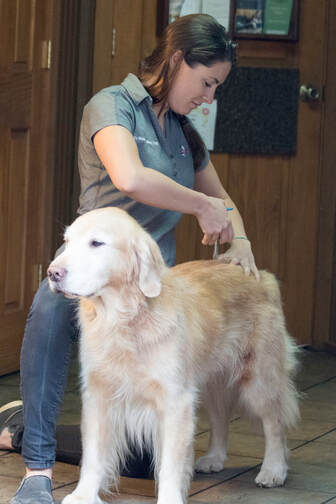
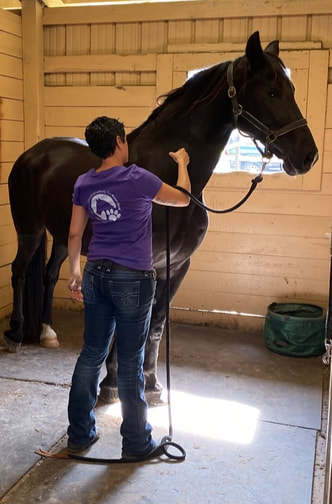
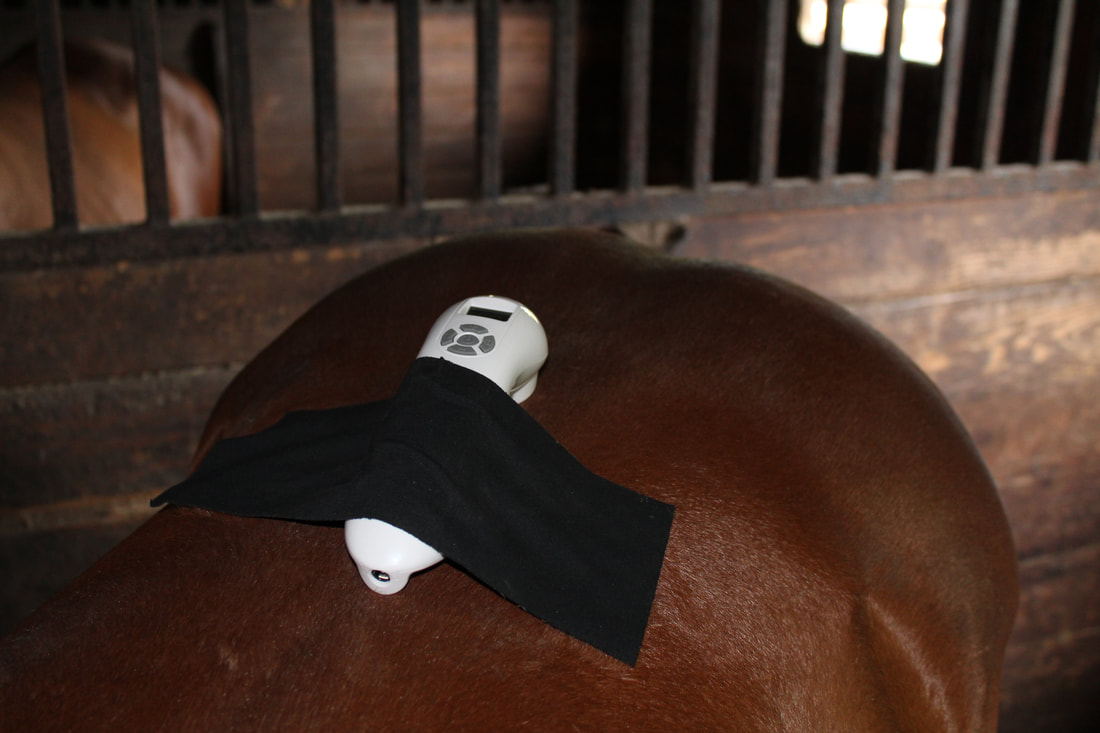
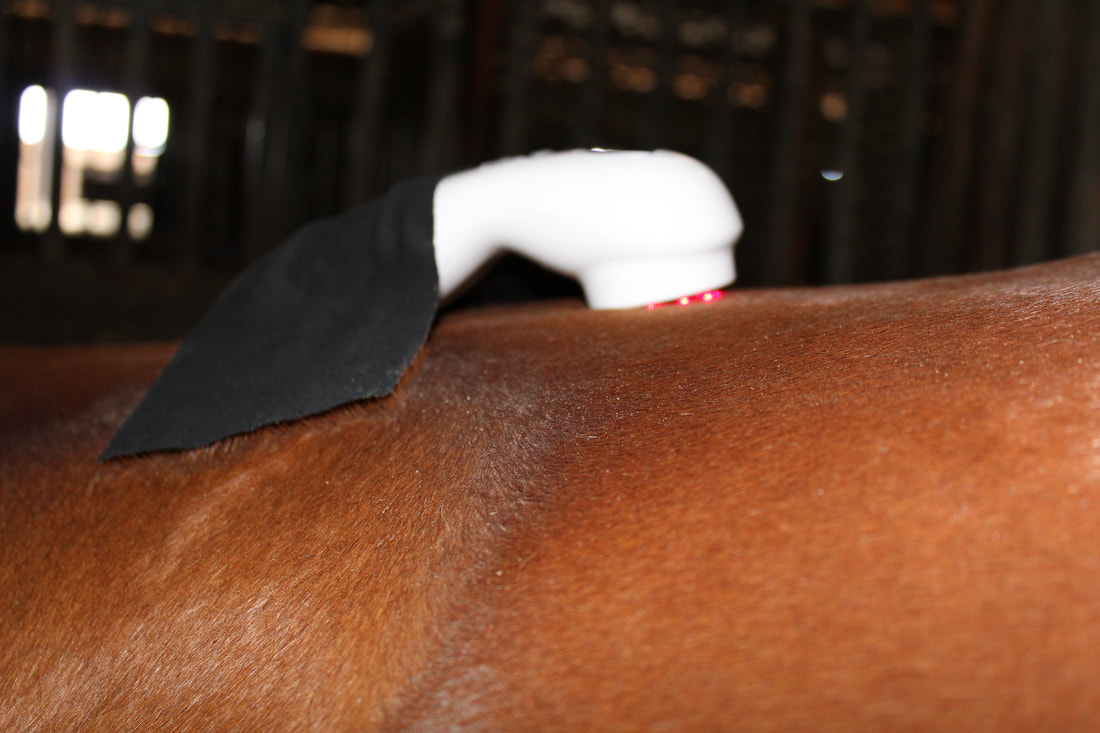
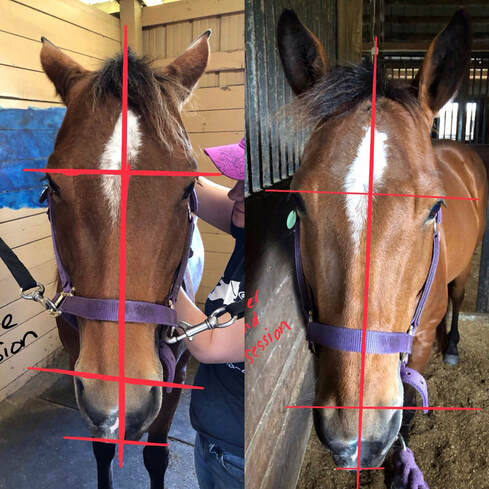
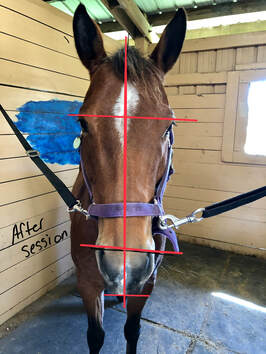
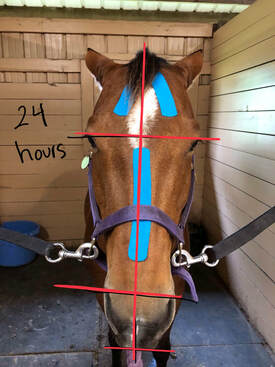
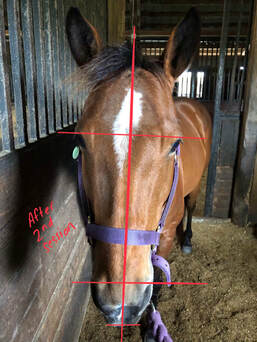
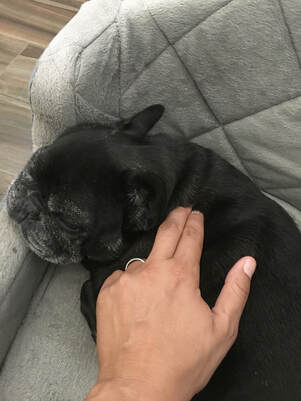
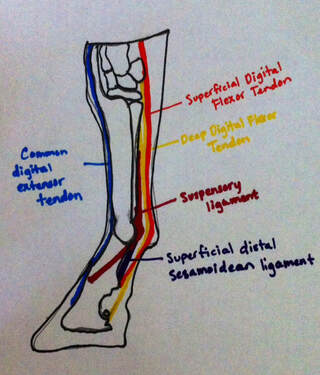
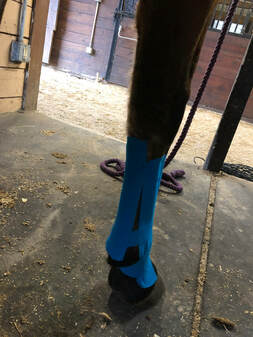
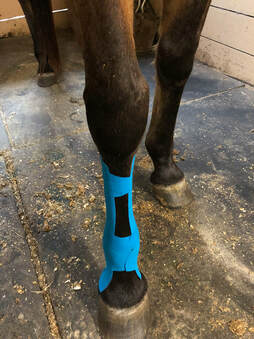

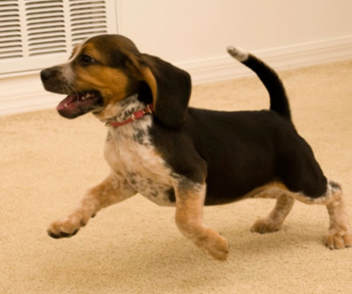

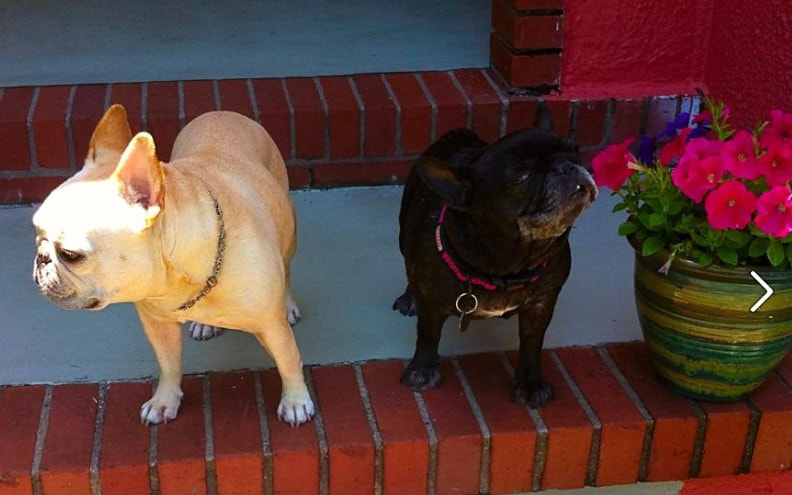
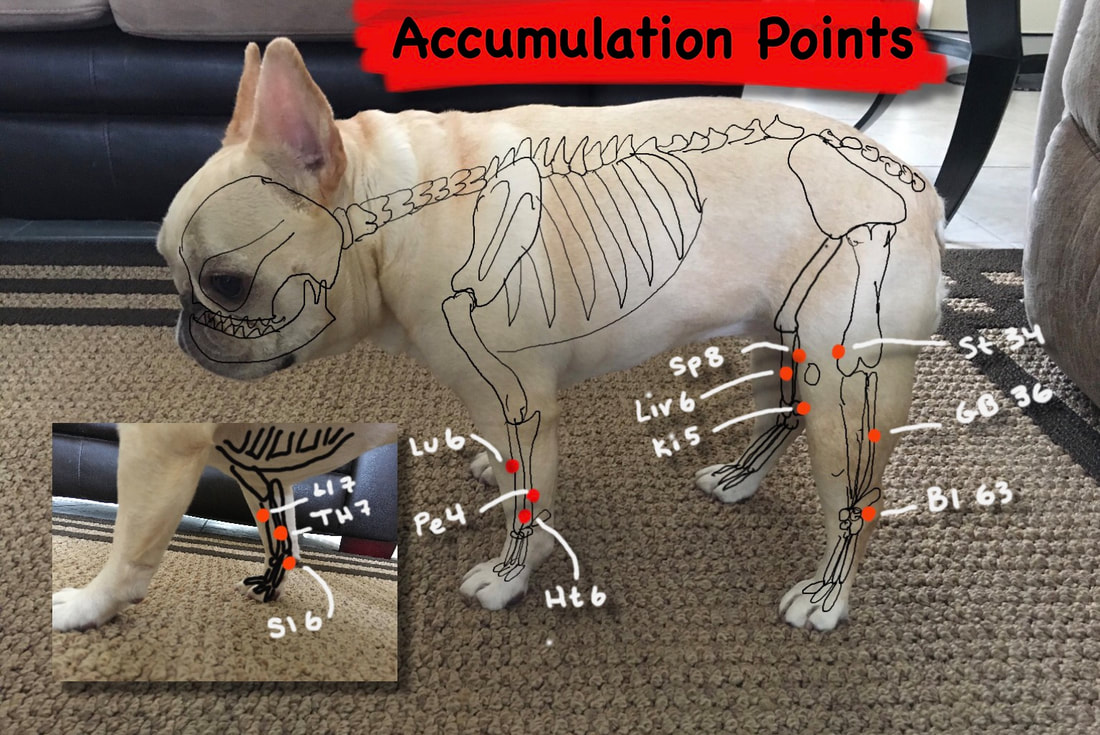
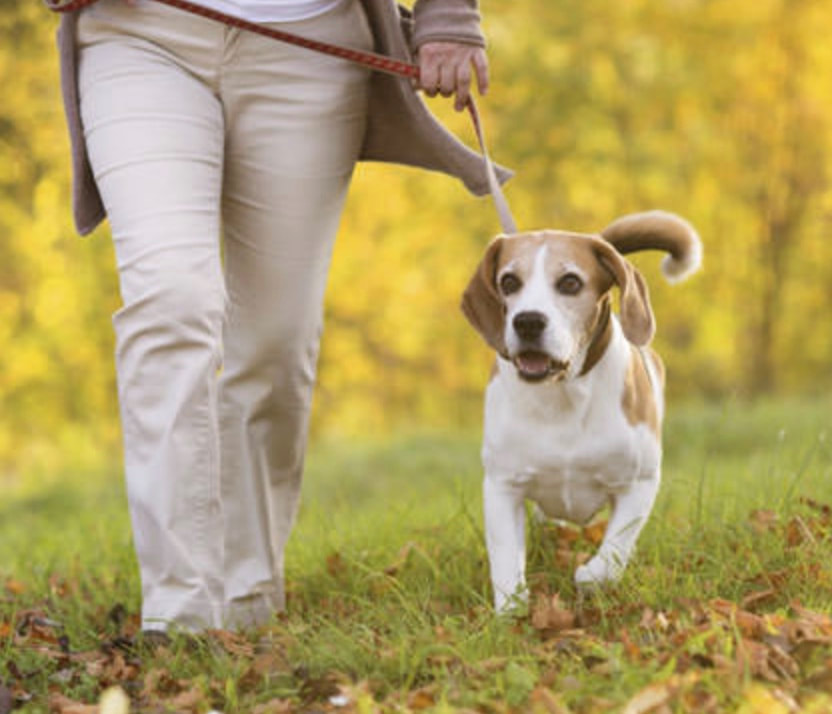
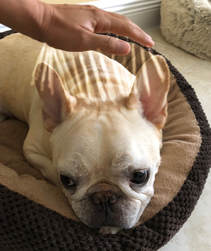
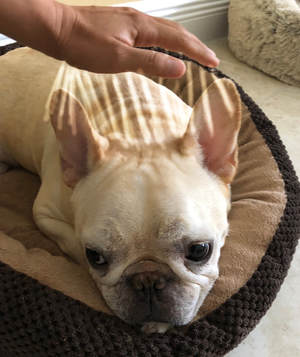
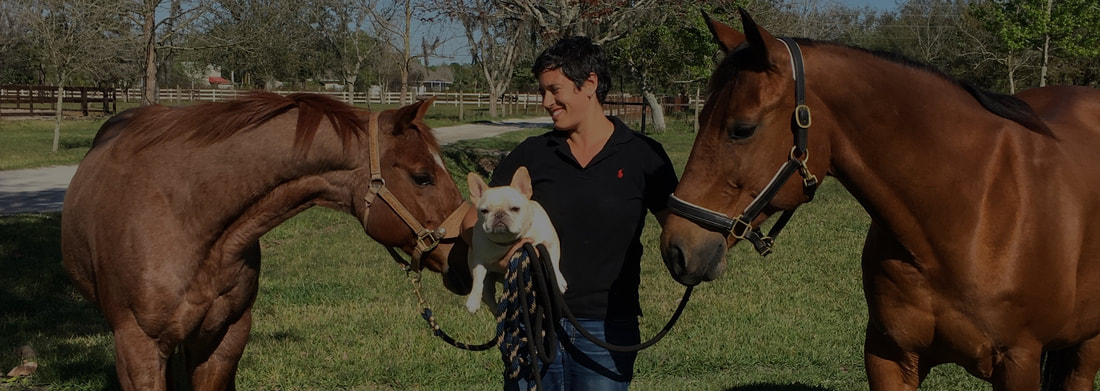
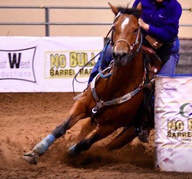
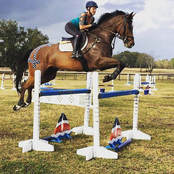
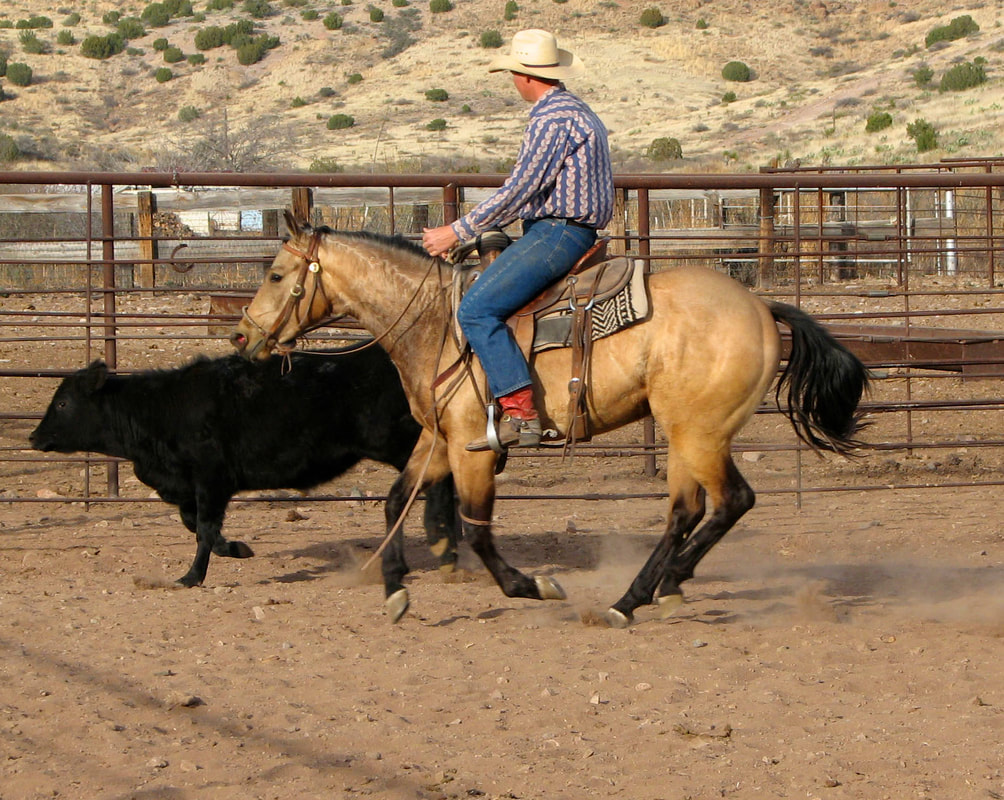


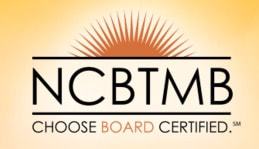
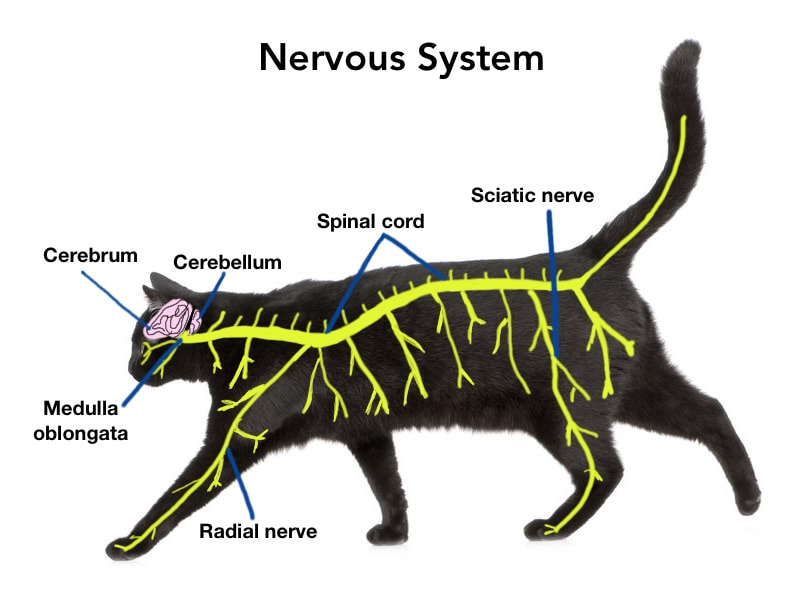
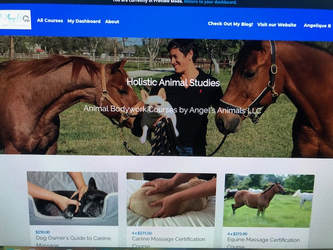
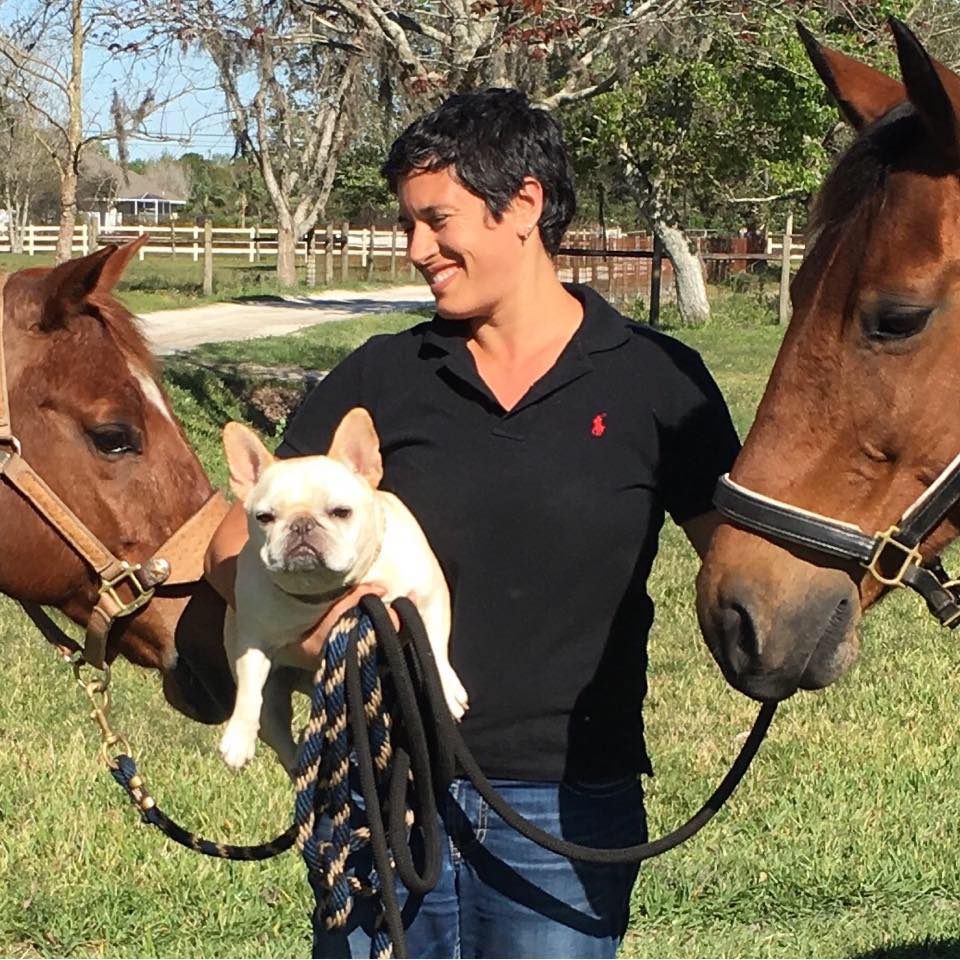
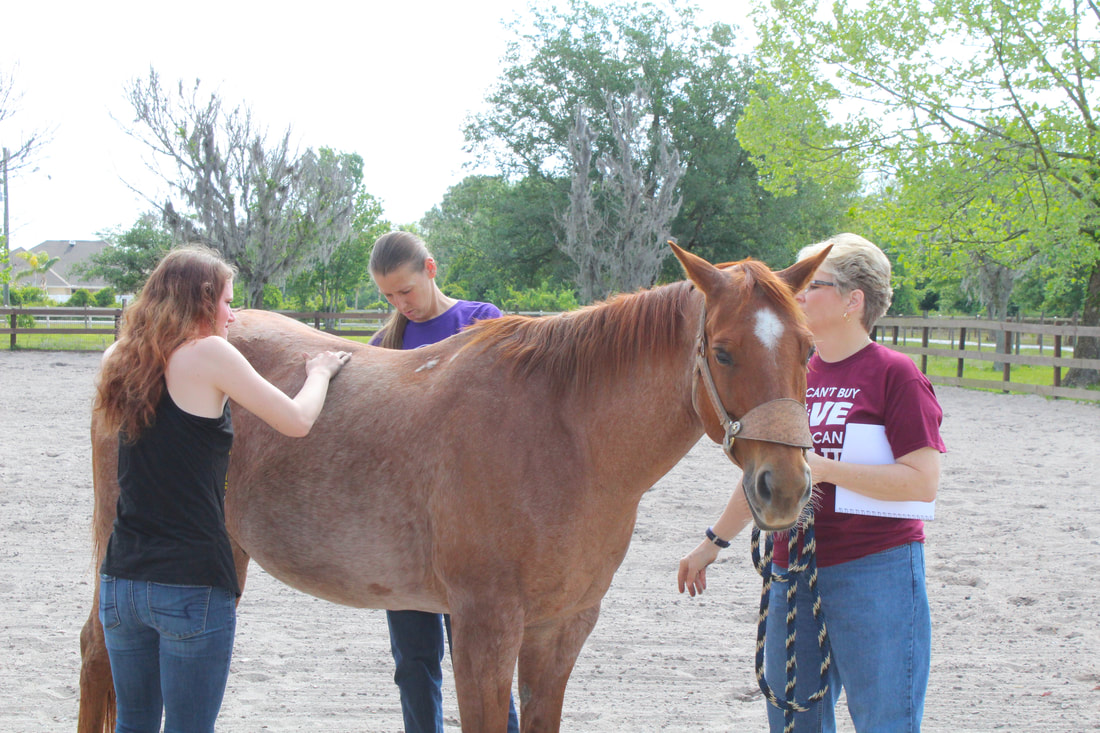


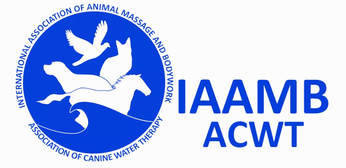


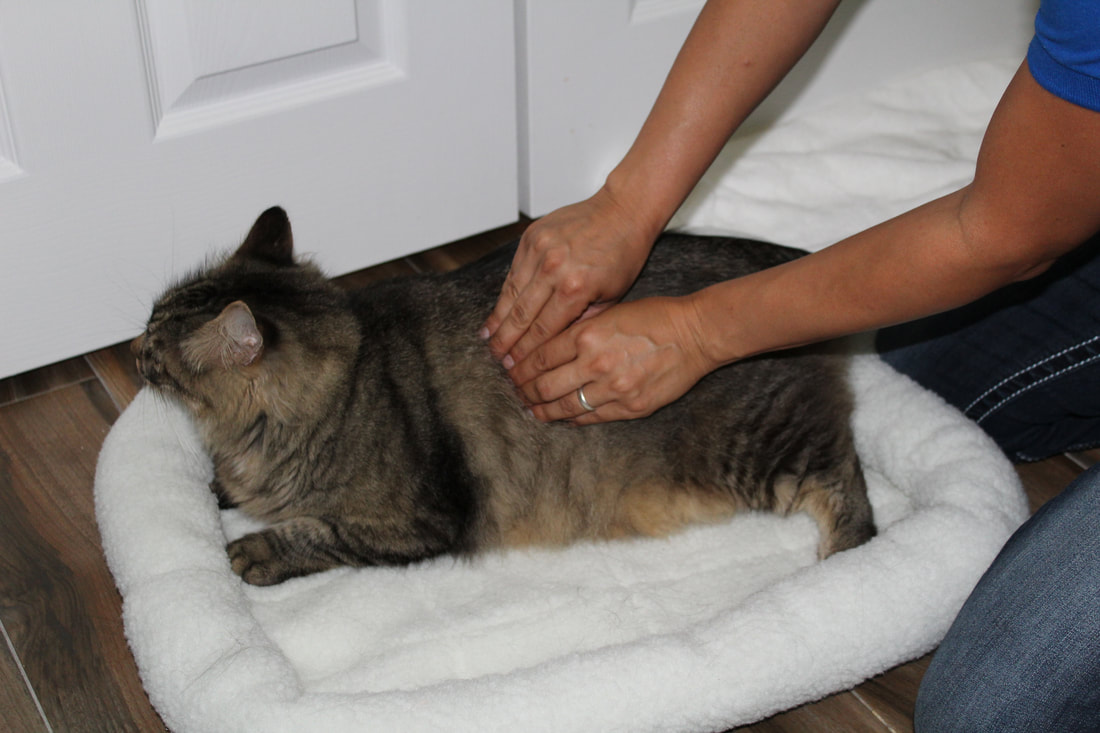
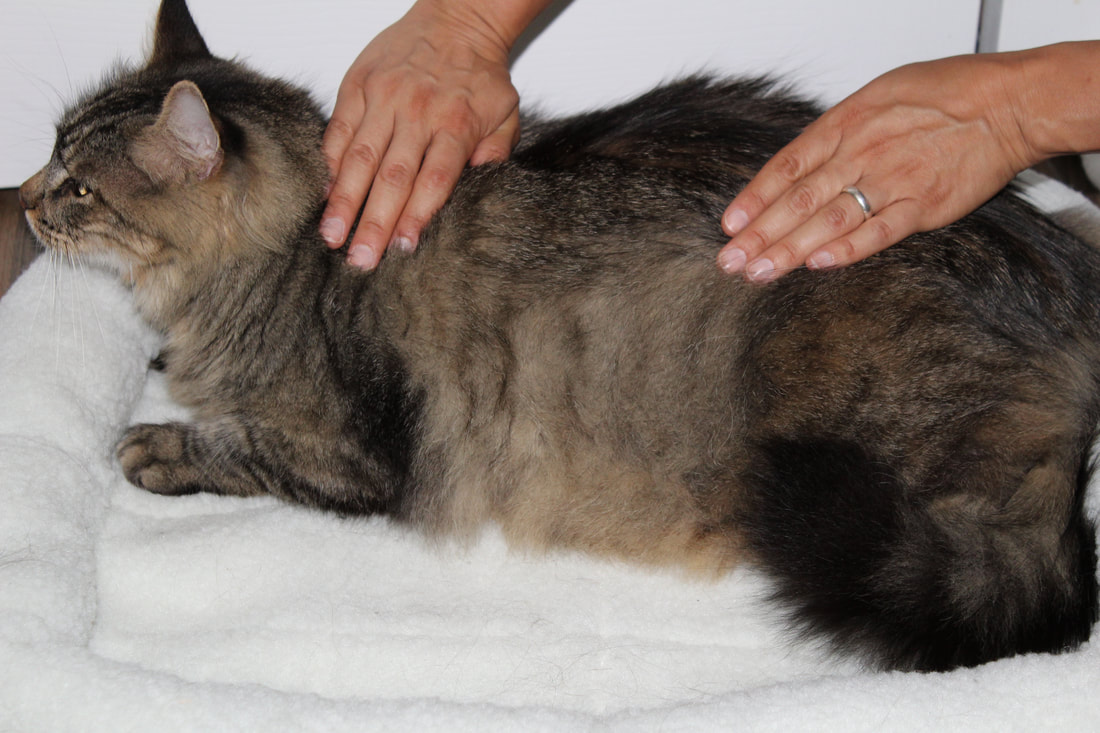
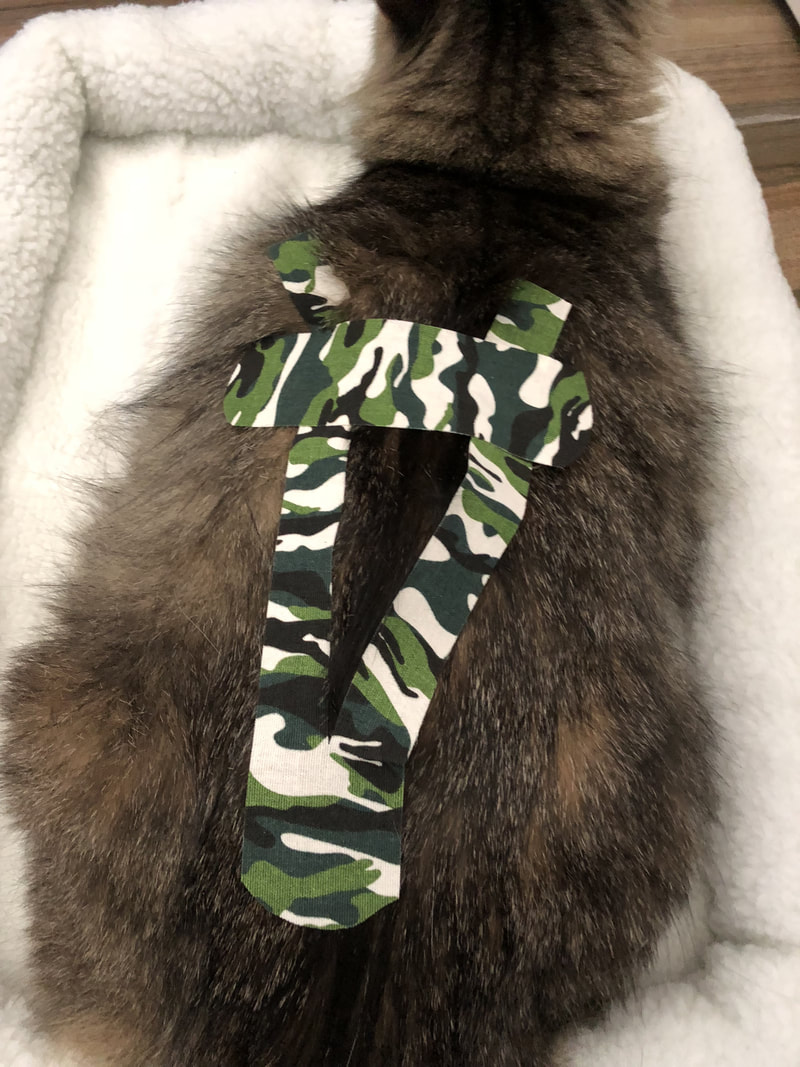
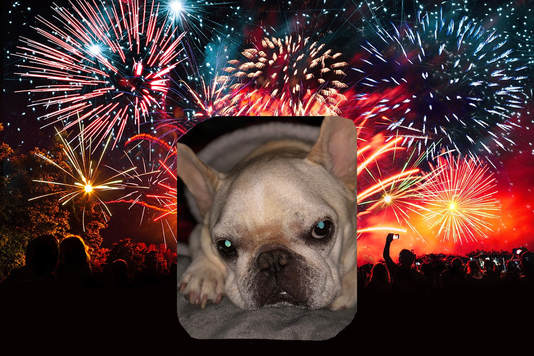
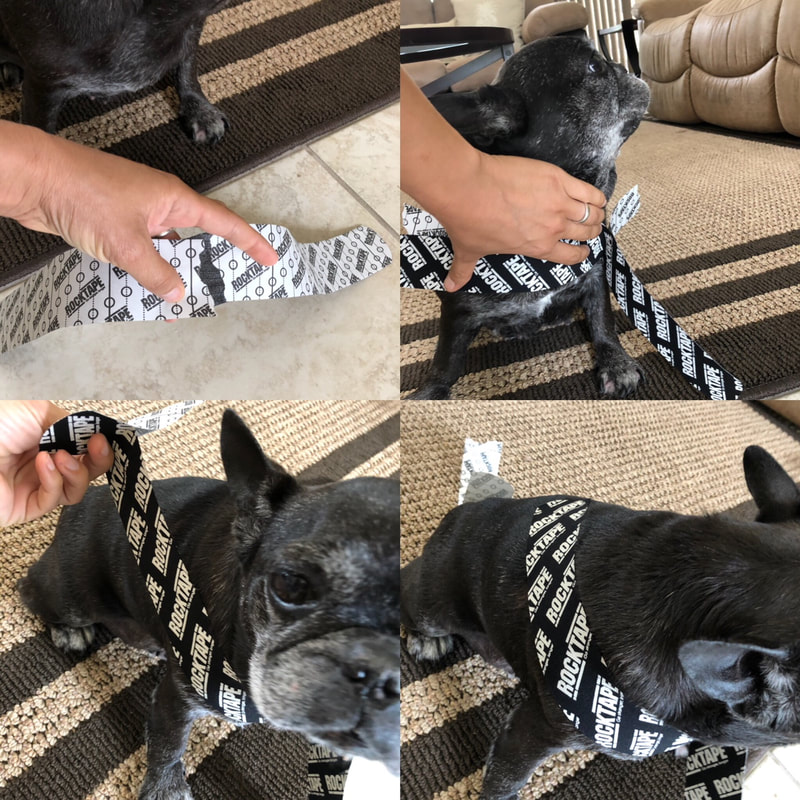
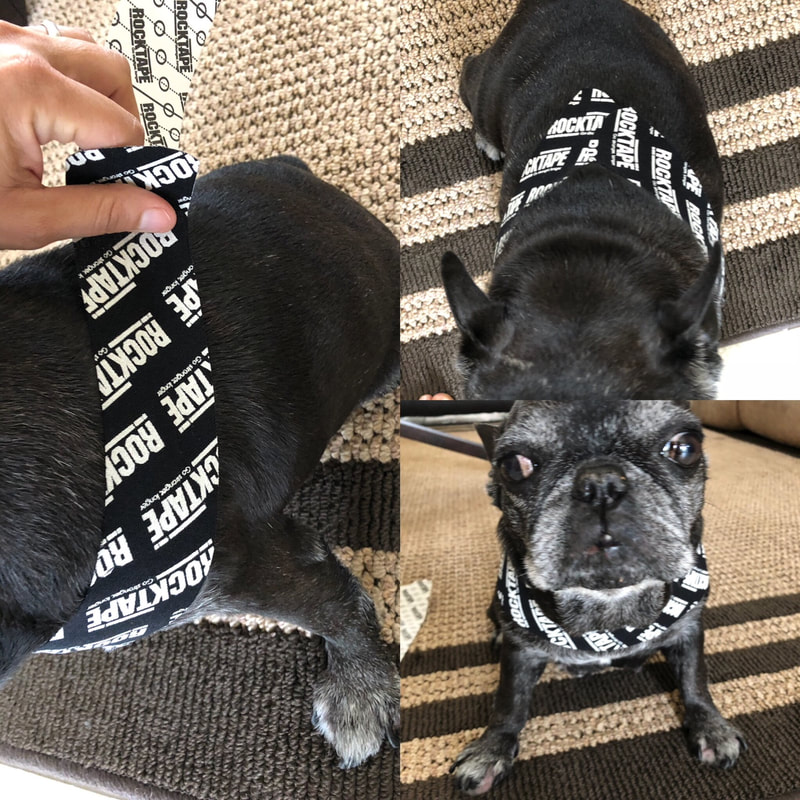
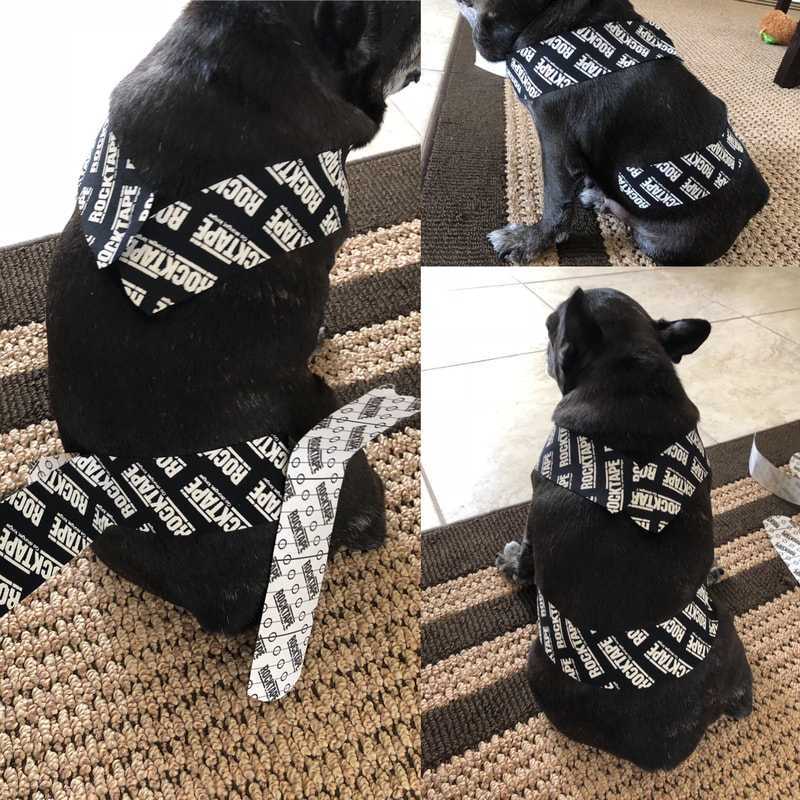

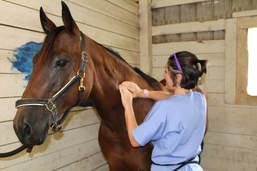
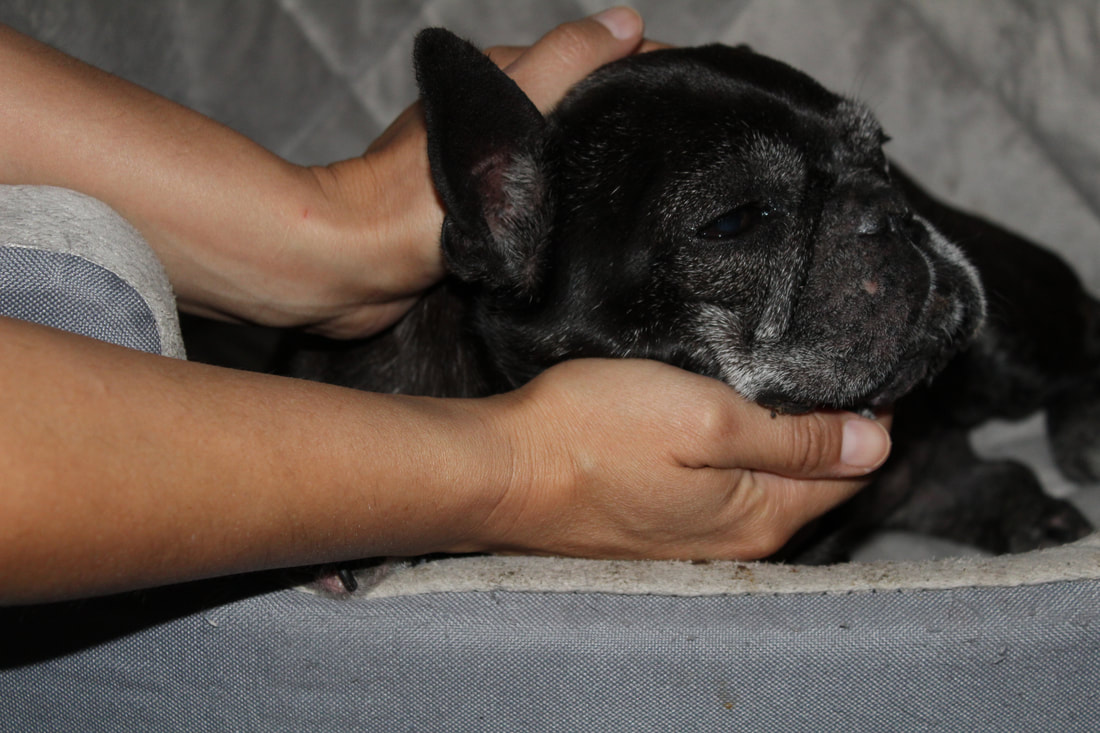
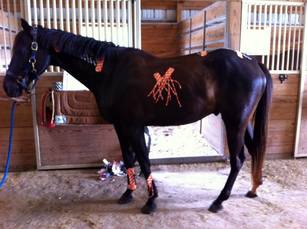
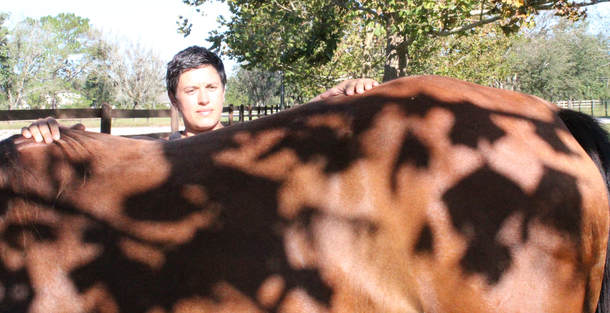
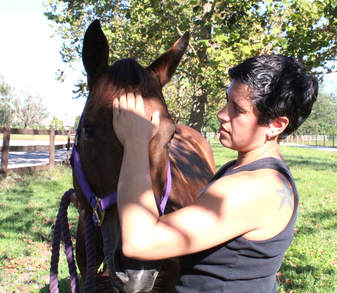
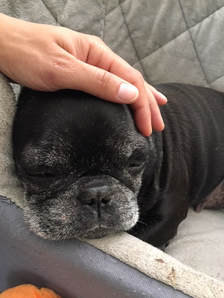
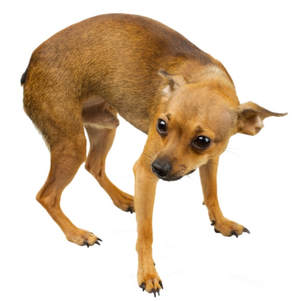
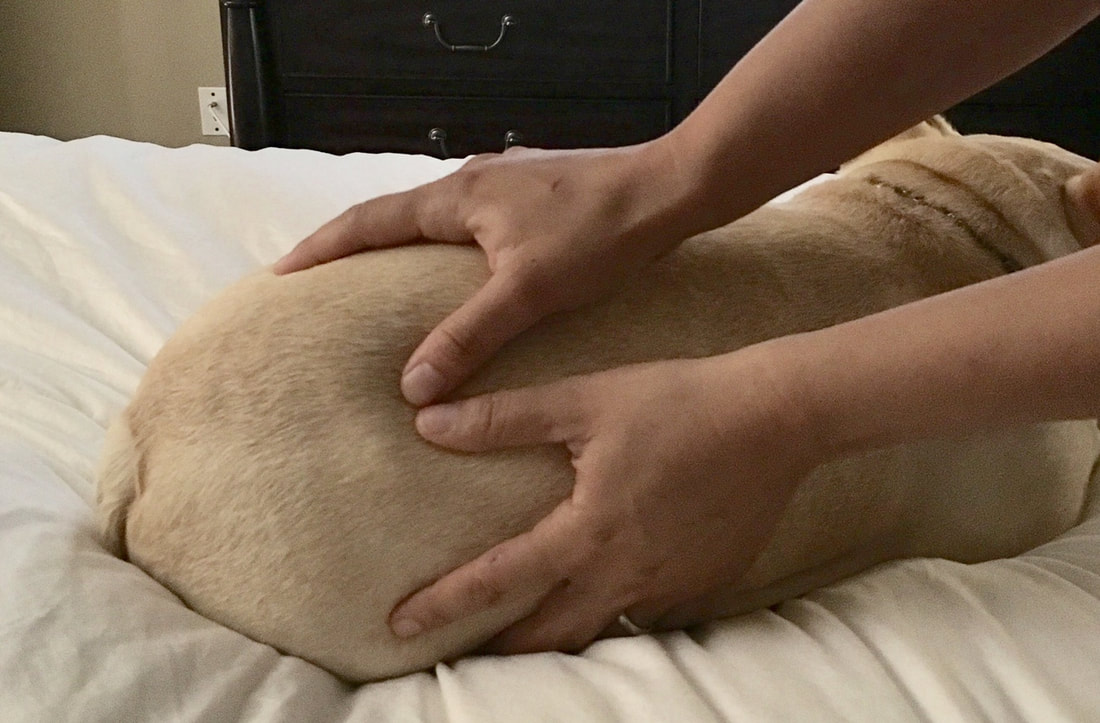
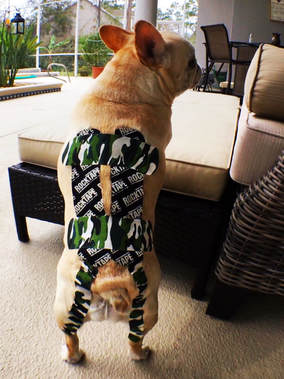
 RSS Feed
RSS Feed